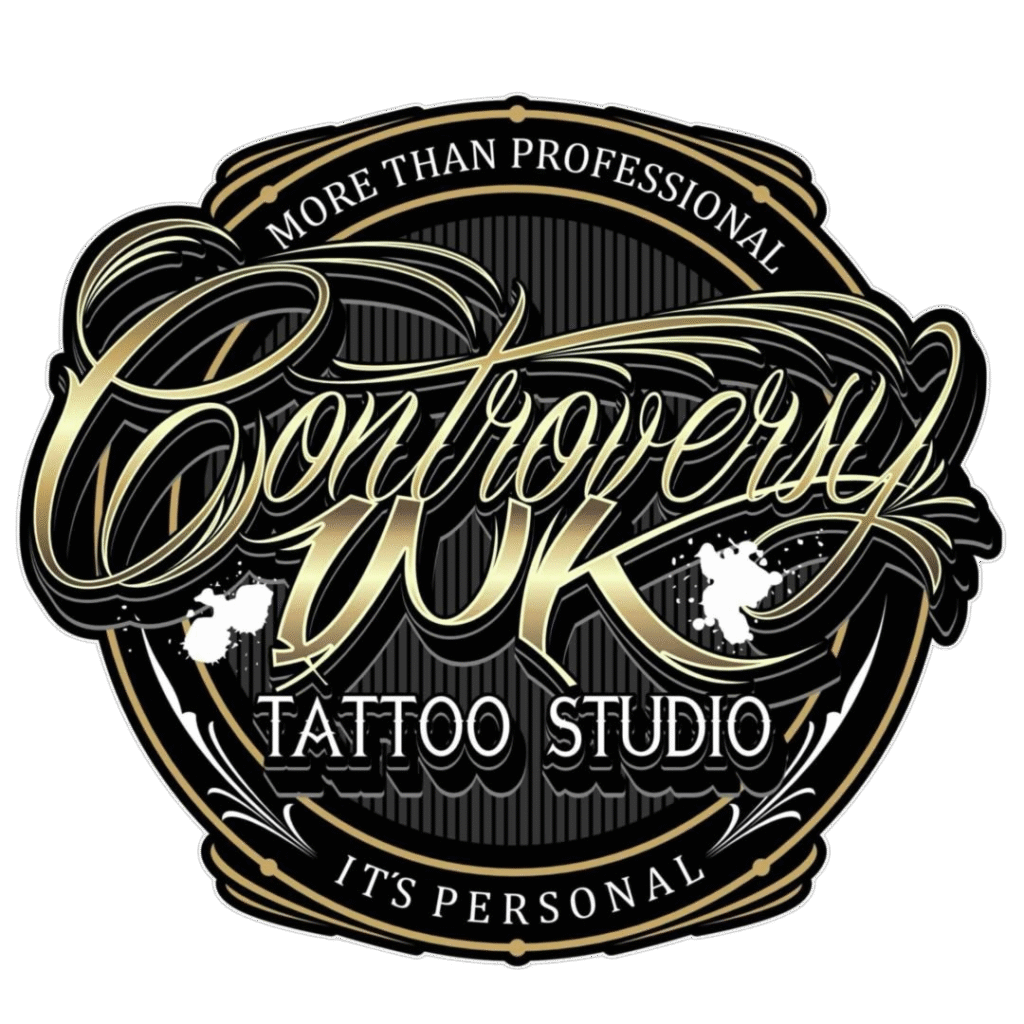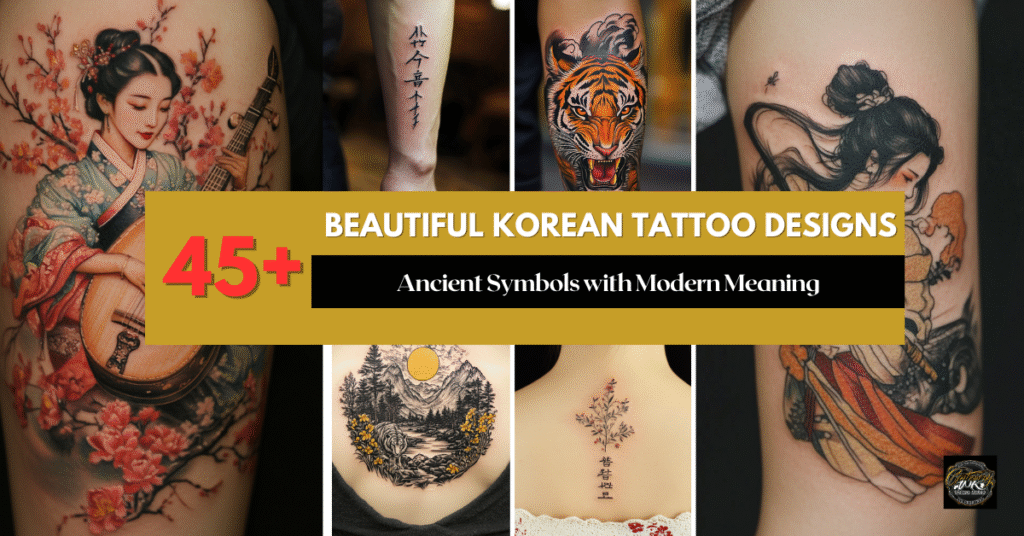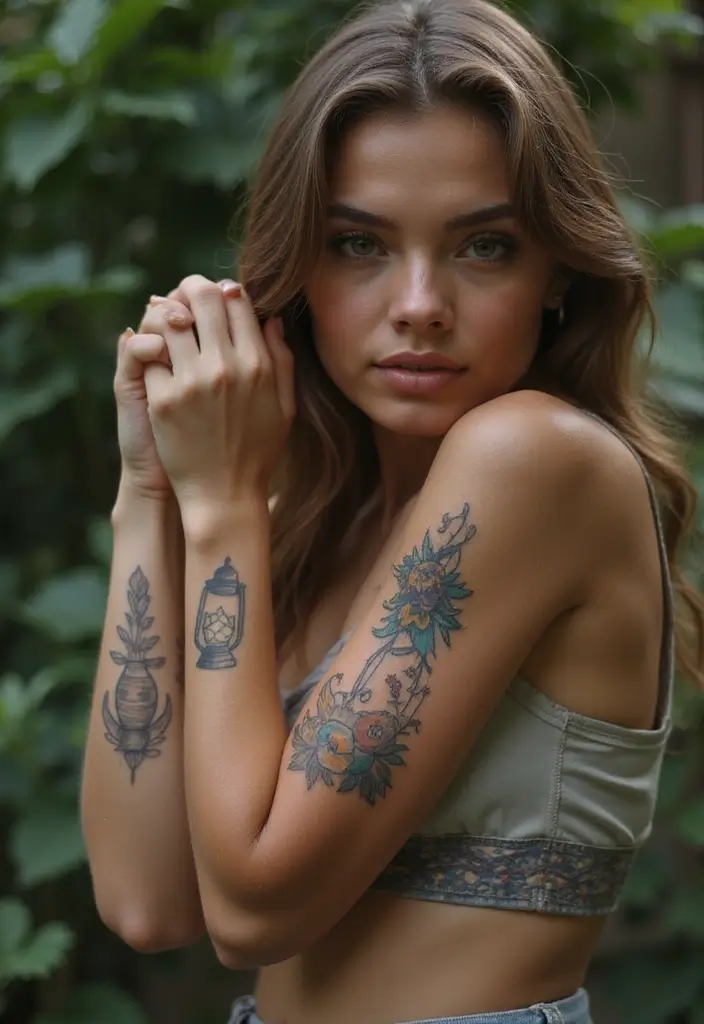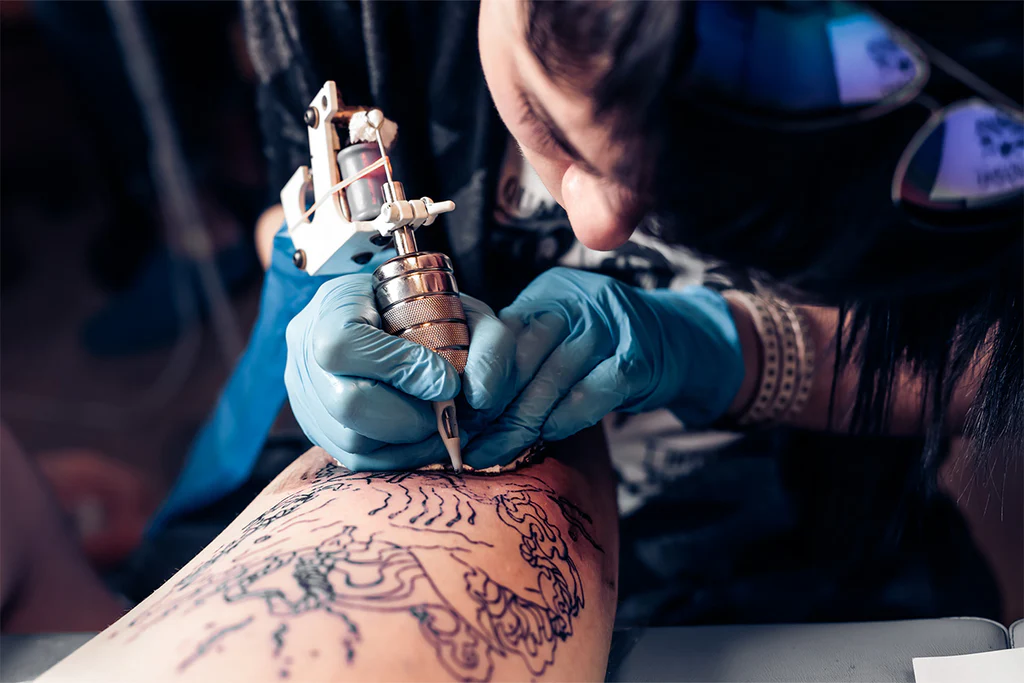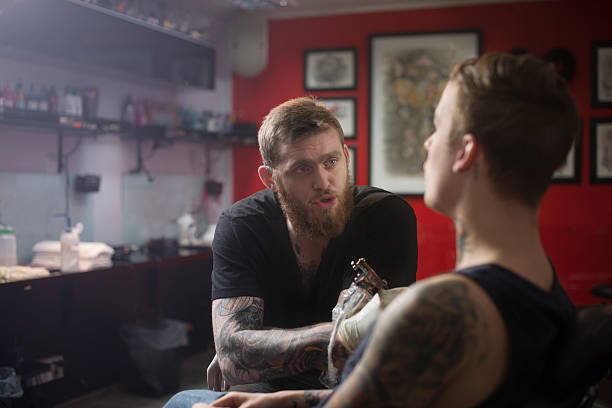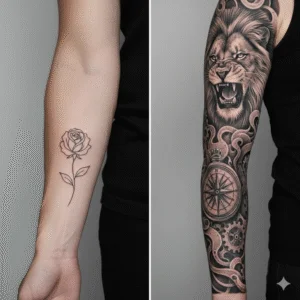Thinking about getting a Korean tattoo? You’re not alone. Korean tattoos have surged in popularity worldwide, blending the country’s rich artistic traditions with modern ink designs. From delicate Hangul script to powerful symbols rooted in Korean culture, these tattoos offer a unique way to express yourself with Eastern aesthetic.
When you choose a Korean-inspired tattoo, you’re embracing more than just a beautiful design—you’re connecting with centuries of artistic heritage. Whether you’re drawn to the elegant simplicity of Korean calligraphy or the symbolic meaning behind traditional motifs, Korean tattoos provide endless creative possibilities. Ready to discover how these distinctive designs could become your next meaningful body art?
The Rich Cultural Heritage Behind Korean Tattoos
Korean tattoos are deeply rooted in centuries of artistic tradition and cultural significance. Understanding this heritage not only enhances your appreciation of these designs but also helps you choose a tattoo that resonates with authentic Korean values and symbolism.
Ancient Origins of Korean Tattoo Art
Korean tattoo history dates back to ancient times when body markings served various purposes beyond mere decoration. Archaeological evidence suggests that tattooing practices in Korea began as early as 6000 BCE, with discoveries of tattooed mummies from the Bronze Age. These early tattoos often served as:
- Tribal identifiers that distinguished different clans across the Korean peninsula
- Spiritual protection against evil spirits and natural disasters
- Social status markers indicating one’s position within the community
- Rites of passage celebrating important life transitions
- Medicinal treatments for various ailments and chronic pain
Traditional Korean Tattooing Techniques
Traditional Korean tattooing methods differ significantly from modern techniques, reflecting the resourcefulness and cultural adaptations of ancient practitioners:
- Hand-poked technique (Sak) – Using hand-crafted tools to manually insert ink into the skin
- Natural pigments – Utilizing charcoal, plant extracts, and minerals instead of synthetic inks
- Bamboo needles – Employing sharpened bamboo sticks bound together for precision work
- Ritual significance – Incorporating prayers and ceremonies into the tattooing process
- Regional variations – Adapting distinct styles based on geographic areas across Korea
Symbolic Elements in Korean Tattoo Designs
Korean tattoos incorporate rich symbolism drawn from the country’s spiritual and cultural traditions:
- Tiger imagery – Representing strength, courage and protection against evil spirits
- Mountain motifs – Symbolizing stability, permanence and spiritual enlightenment
- Lotus flowers – Signifying purity, rebirth and spiritual awakening
- Korean dragons – Embodying power, good fortune and divine protection
- Dokkaebi (goblins) – Featuring mythical creatures that bring both mischief and blessings
- Haetae – Depicting mythical lion-like creatures that guard against disaster and misfortune
The Influence of Korean Dynasties
Each major Korean dynasty contributed unique artistic elements that continue to inspire contemporary tattoo designs:
- Three Kingdoms Period (57 BCE-668 CE) – Geometric patterns and warrior symbolism
- Goryeo Dynasty (918-1392) – Buddhist imagery and sophisticated calligraphy
- Joseon Dynasty (1392-1910) – Confucian ideals represented through nature motifs
- Modern Era (post-1945) – Blend of traditional elements with contemporary artistic styles
The Cultural Significance of Hanbok-Inspired Designs
Hanbok, Korea’s traditional attire, inspires many tattoo designs through its distinctive elements:
- Flowing ribbon motifs from traditional dress ties
- Geometric patterns found on hanbok fabric
- Color symbolism reflecting traditional Korean color theory
- Complementary floral designs often embroidered on formal hanbok
- Modern interpretations that blend hanbok elements with contemporary designs
The Spiritual Dimension of Korean Tattoos
- Buddhist symbols like the dharma wheel and endless knot
- Shamanic imagery featuring guardian spirits and magical objects
- Confucian values represented through exact characters and symbols
- Folk religion elements including protective talismans and sacred animals
- Harmony-focused designs that balance opposing forces like yin and yang
Traditional Korean Tattoo Symbols and Their Meanings
Korean tattoo art is rich with symbolic imagery that carries deep cultural significance. These traditional symbols offer meaningful tattoo options that connect wearers to Korea’s ancient heritage while making powerful personal statements.
Animal Symbols in Korean Tattoo Art
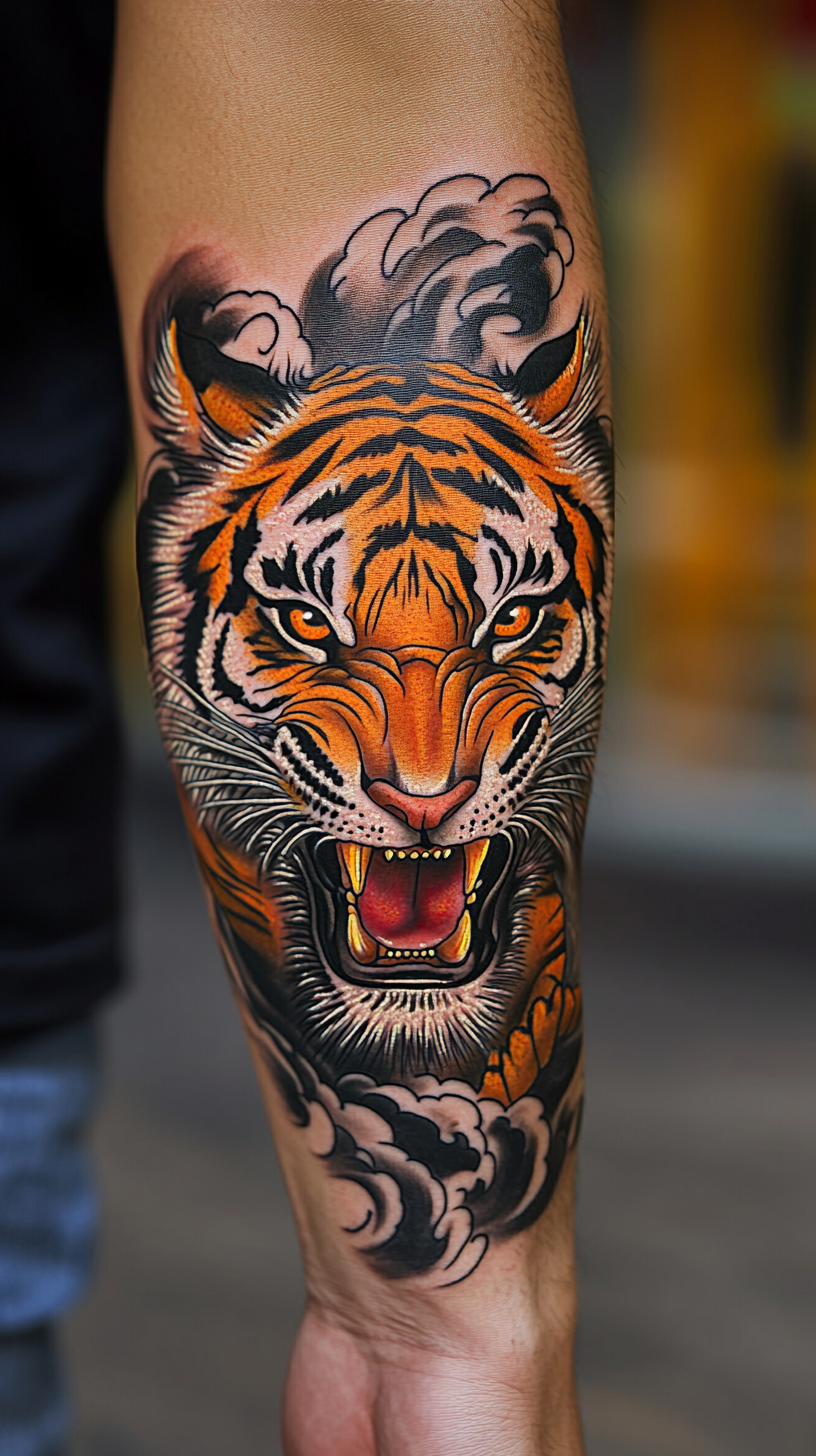
- Tiger (호랑이/Horangi) – The tiger represents strength and protection in Korean culture. As the country’s national animal, a tiger tattoo symbolizes courage, power, and the ability to ward off evil spirits. Traditional Korean tiger designs often feature bold colors and stylized features.
- Dragon (용/Yong) – Unlike Chinese dragons, Korean dragons typically have four toes and symbolize sovereignty, wisdom, and good fortune. These majestic creatures make striking tattoos that represent authority and divine protection.
- Phoenix (봉황/Bonghwang) – This mythical bird symbolizes rebirth, renewal, and eternal life. In Korean tradition, the phoenix represents the virtues of loyalty, honesty, and justice, making it a powerful choice for those seeking transformation.
- Tortoise (거북이/Geobuk-i) – Considered one of the four divine creatures in Korean mythology, the tortoise symbolizes longevity, wisdom, and support. Turtle tattoos often incorporate elements like the Korean flag or waves to enhance their meaning.
- Magpie (까치/Kkachi) – These birds are symbols of good luck and joy in Korean folklore. A magpie tattoo represents the arrival of good news and happiness, often depicted perched on plum tree branches.
- Haetae (해태) – This mythical lion-like creature with a horn on its head serves as a guardian against disaster and injustice. Haetae tattoos symbolize protection and righteous judgment.
- Rabbit (토끼/Tokki) – In Korean folklore, rabbits are associated with the moon and represent fertility, prosperity, and good fortune. They’re often depicted pounding rice cakes in traditional tattoo designs.
Nature-Inspired Korean Tattoo Designs
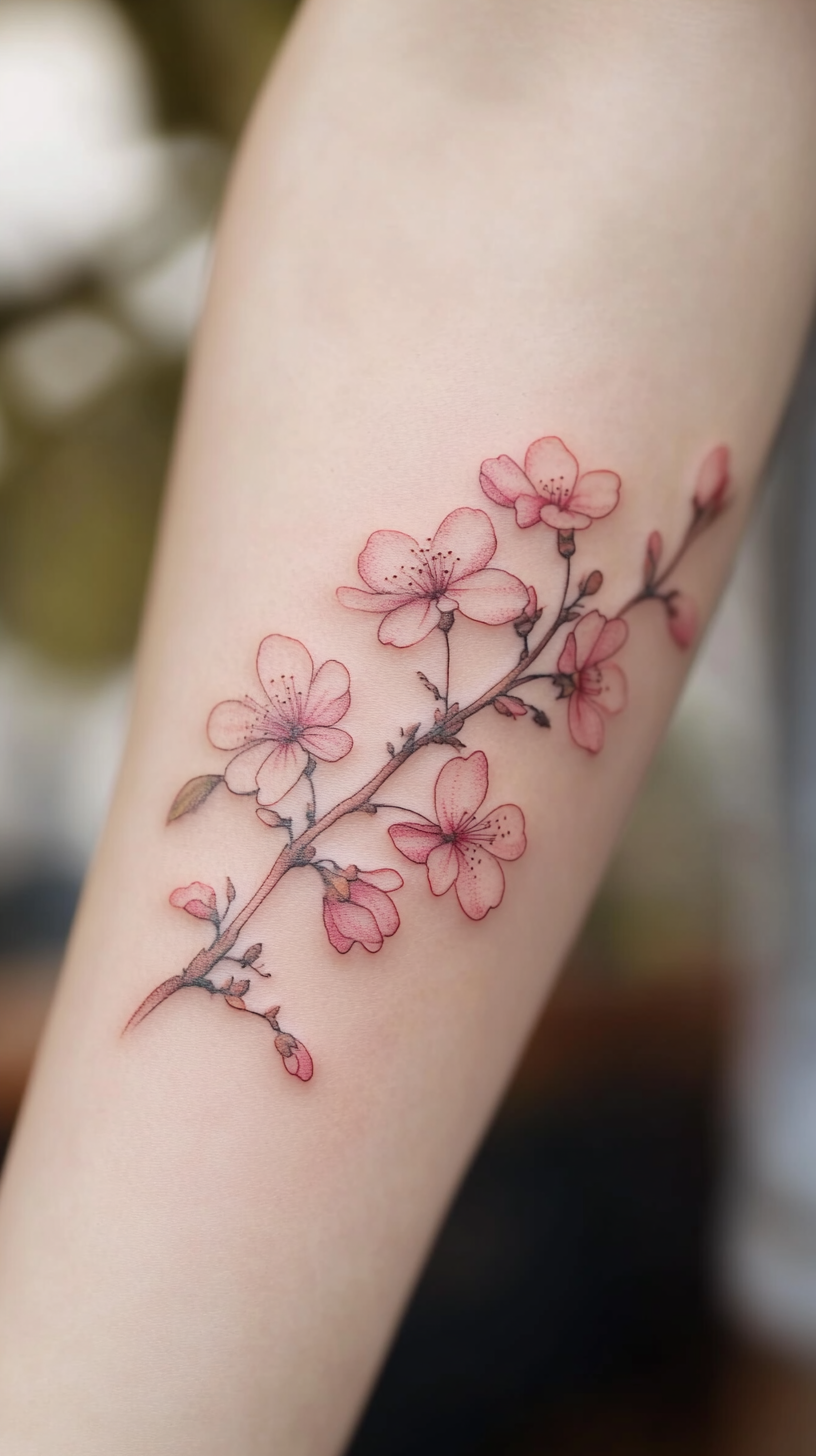
- Cherry Blossoms (벚꽃/Beotkkot) – These delicate flowers symbolize the beauty and fragility of life. In Korean culture, cherry blossoms represent renewal and the fleeting nature of existence, making them popular for elegant, feminine tattoos.
- Pine Trees (소나무/Sonamu) – Symbolizing longevity, steadfastness, and resilience, pine trees are respected in Korean culture for their ability to stay green throughout harsh winters. These tattoos represent endurance through difficult times.
- Lotus Flower (연꽃/Yeonkkot) – With strong Buddhist connections, the lotus represents purity, enlightenment, and rebirth. Rising from muddy waters to bloom beautifully, lotus tattoos symbolize overcoming struggles and achieving spiritual growth.
- Mountains (산/San) – Mountains hold special significance in Korean culture as sacred places. Tattoos featuring mountains like Baekdusan (백두산) or Hallasan (한라산) represent stability, permanence, and a connection to Korean heritage.
- Plum Blossoms (매화/Maehwa) – Blooming in winter, plum blossoms symbolize perseverance, hope, and resilience. These tattoos represent inner strength and the ability to thrive during challenging circumstances.
- Korean Pines (곰솔/Gomsol) – These distinctive trees with their curved trunks represent harmony with nature and adaptability. Often depicted in traditional Korean paintings, they make unique tattoo designs that connect to Korean industry art.
- Waves (파도/Pado) – Inspired by famous Korean artworks like Jeongson’s “The Great Wave,” wave tattoos represent life’s ups and downs. These ever-changing designs symbolize both power and tranquility, reflecting life’s constant change.
Modern Korean Tattoo Styles and Techniques
Korean tattoo artistry has evolved dramatically in recent years, blending traditional influences with contemporary approaches that appeal to modern tattoo enthusiasts worldwide.
Minimalist Korean Tattoo Aesthetics
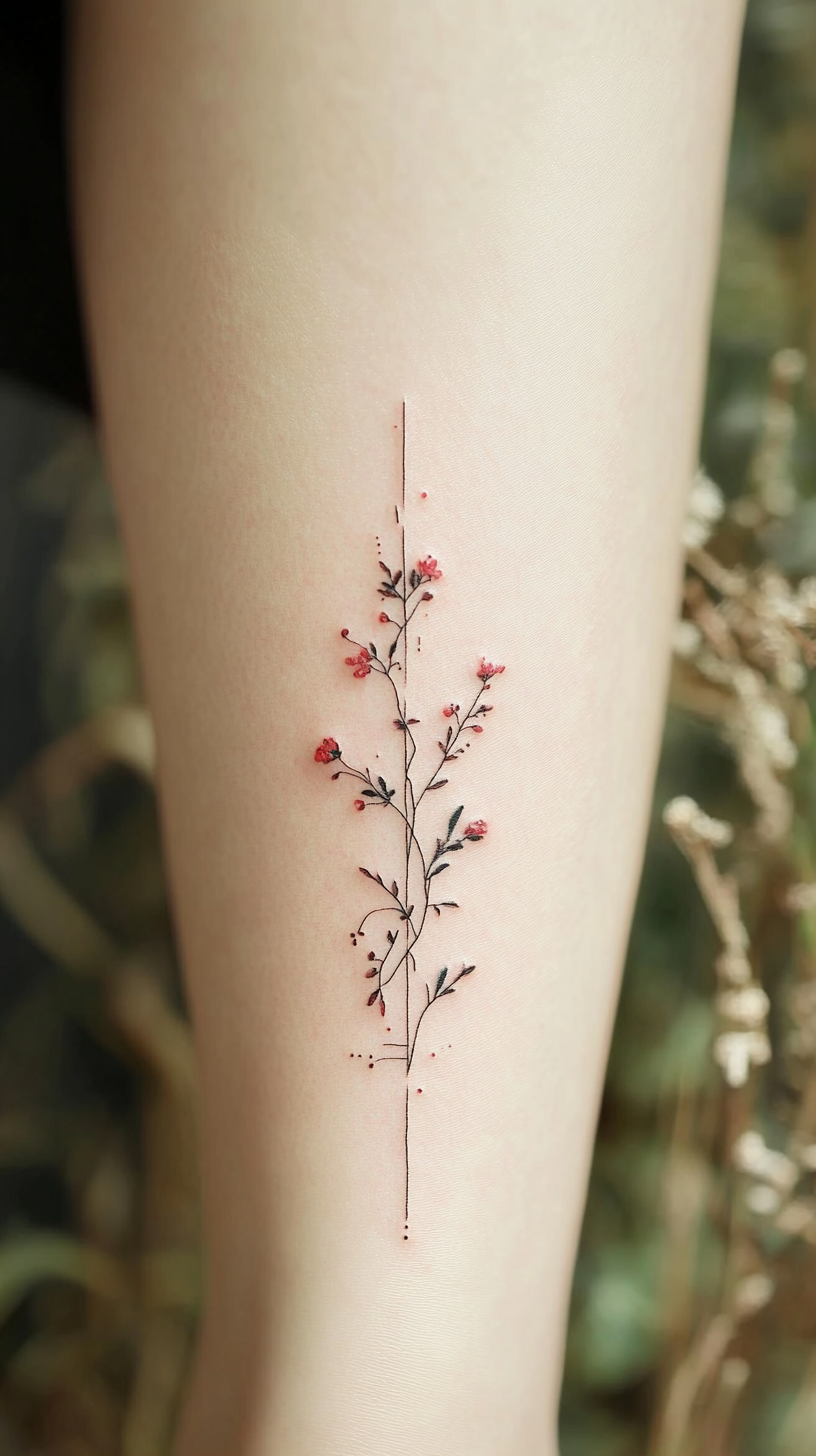
Minimalist Korean tattoos have gained immense popularity for their subtle elegance and refined simplicity. These designs feature:
- Single-line hangeul characters that capture meaningful Korean words or phrases using clean, continuous strokes without embellishment.
- Micro Korean symbols that incorporate traditional elements like the tiger or taegeuk (yin-yang symbol) in sizes as small as 1-2 centimeters, perfect for discreet placement on wrists or behind ears.
- Negative space techniques where Korean artists create symbolic shapes through clever use of empty space, making the design appear both present and absent simultaneously.
- Geometric Korean patterns that reduce traditional motifs into basic shapes and lines while maintaining their cultural significance.
- Dotwork hangeul utilizing tiny dots to form Korean letters or words, creating a softer appearance than solid lines while maintaining legibility.
- Finger tattoos featuring subtle Korean symbols or single characters that can be easily concealed when necessary while holding deep personal meaning.
Watercolor Korean Tattoo Innovations
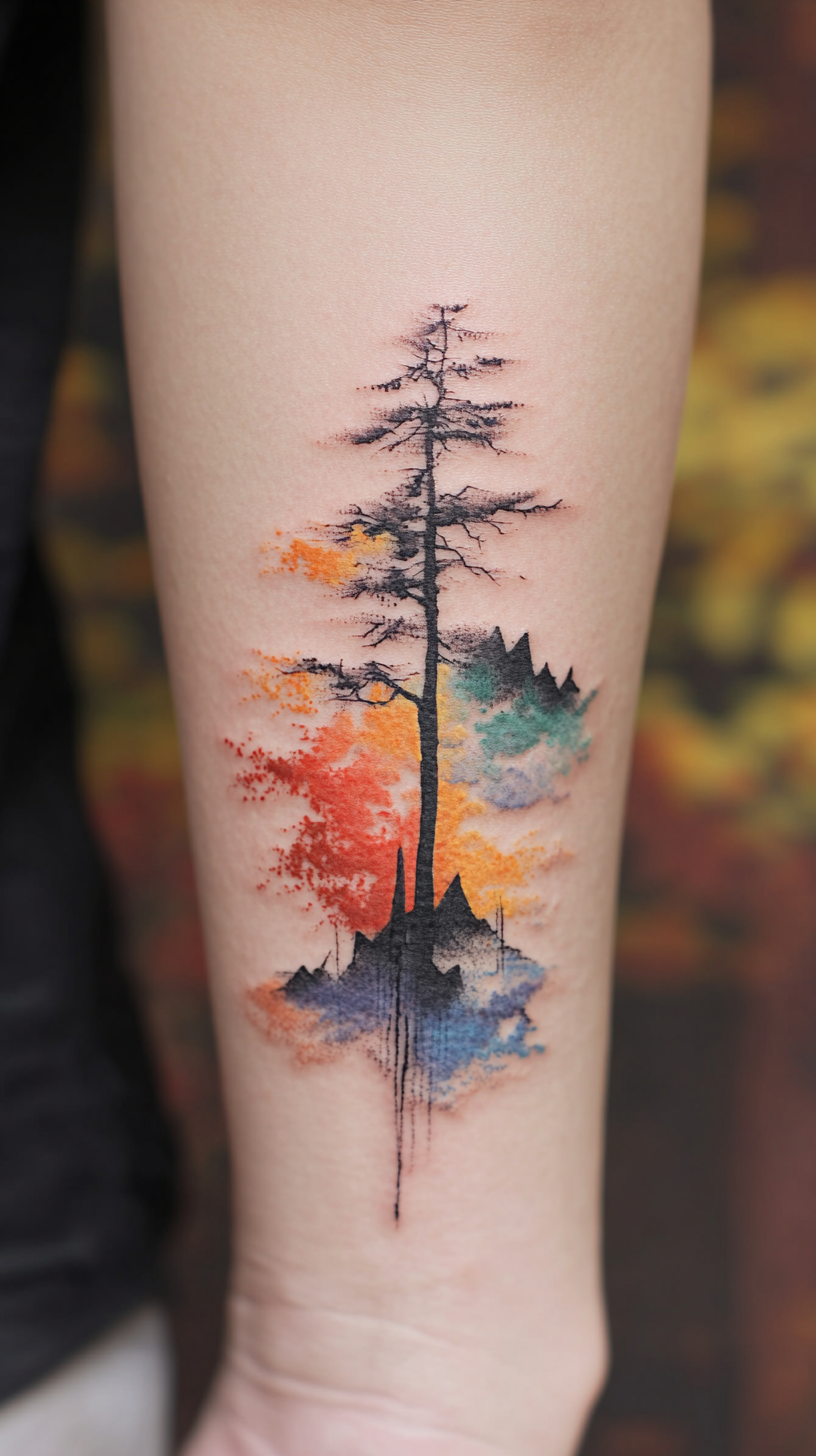
Korean watercolor tattoos combine traditional East Asian brushwork techniques with modern color applications to create stunning artistic pieces. These innovations include:
- Gradient color hangeul where Korean characters flow from one vibrant hue to another, mimicking the appearance of watercolor paintings on rice paper.
- Splashed ink landscapes depicting iconic Korean scenes like Hallasan Mountain or cherry blossom trees with spontaneous-looking color splashes that evoke emotional responses.
- Bleeding edge techniques pioneered by Seoul-based artists who use specialized needles to create color diffusion that appears to bleed naturally into the skin like watercolor on paper.
- Traditional-modern fusion designs that incorporate ancient Korean symbols with contemporary watercolor backgrounds, creating striking visual contrasts between precise linework and fluid color fields.
- Abstract emotional expressions where Korean artists use color washes to represent concepts like han (한) – a uniquely Korean emotion of mingled sorrow, regret and hope – without concrete imagery.
- Nature-inspired watercolor tattoos featuring Korean flora like mugunghwa (hibiscus) or baekdusan (white-headed woodpecker) rendered in dreamy, flowing color patterns that appear to move on the skin.
Popular Korean Tattoo Placements and Their Significance
Wrist Korean Tattoos
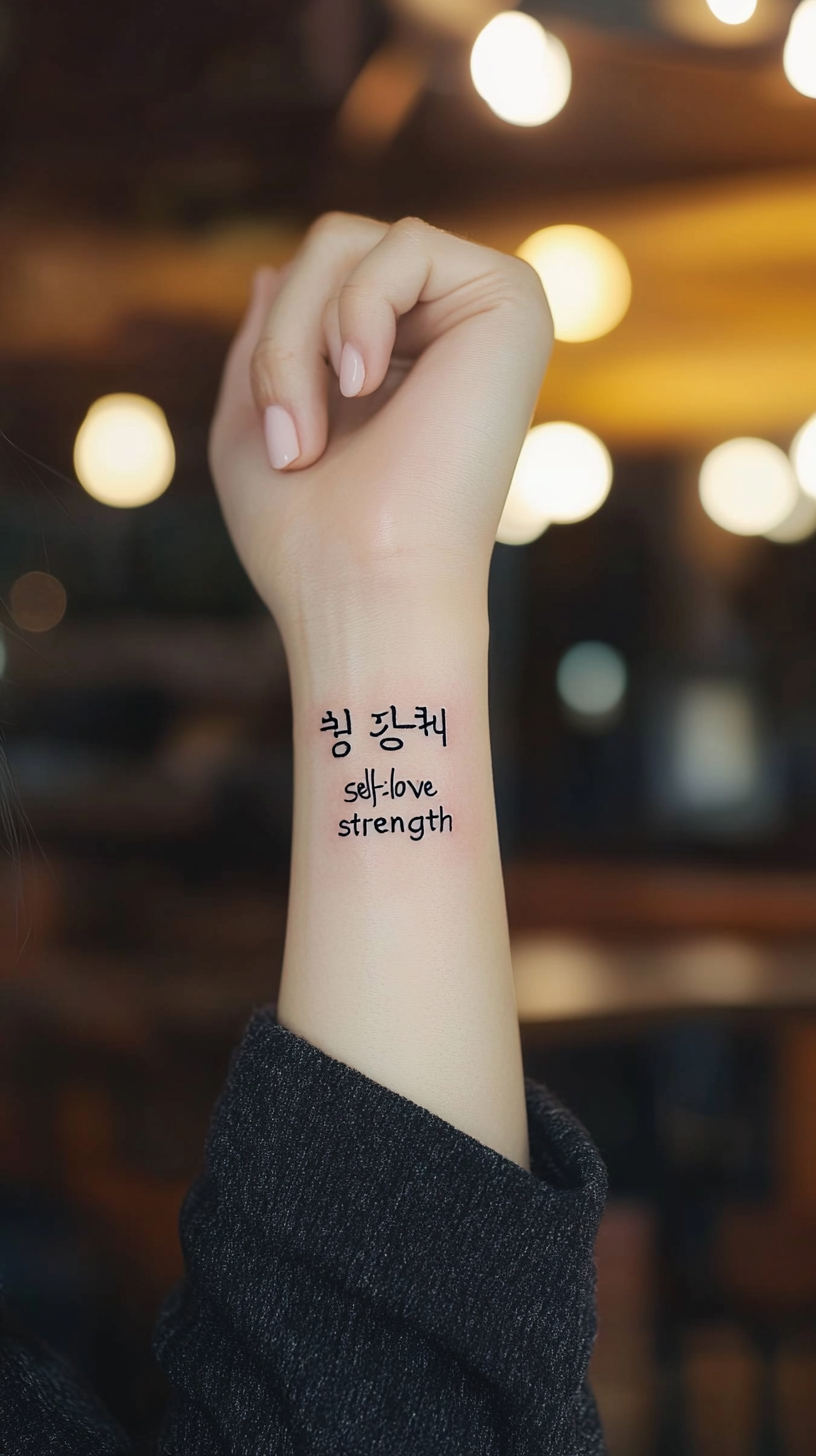
Wrist tattoos are among the most sought-after placements for Korean-inspired designs. Their visibility makes them perfect for showcasing delicate hangeul characters or minimalist Korean symbols. You’ll find these tattoos especially meaningful as they’re constantly within your sight, serving as daily reminders of your connection to Korean culture. Many women choose to place Korean phrases like “self-love” or “strength” on their inner wrists, creating a personal mantra that’s both stylish and important.
Behind-the-Ear Korean Tattoos
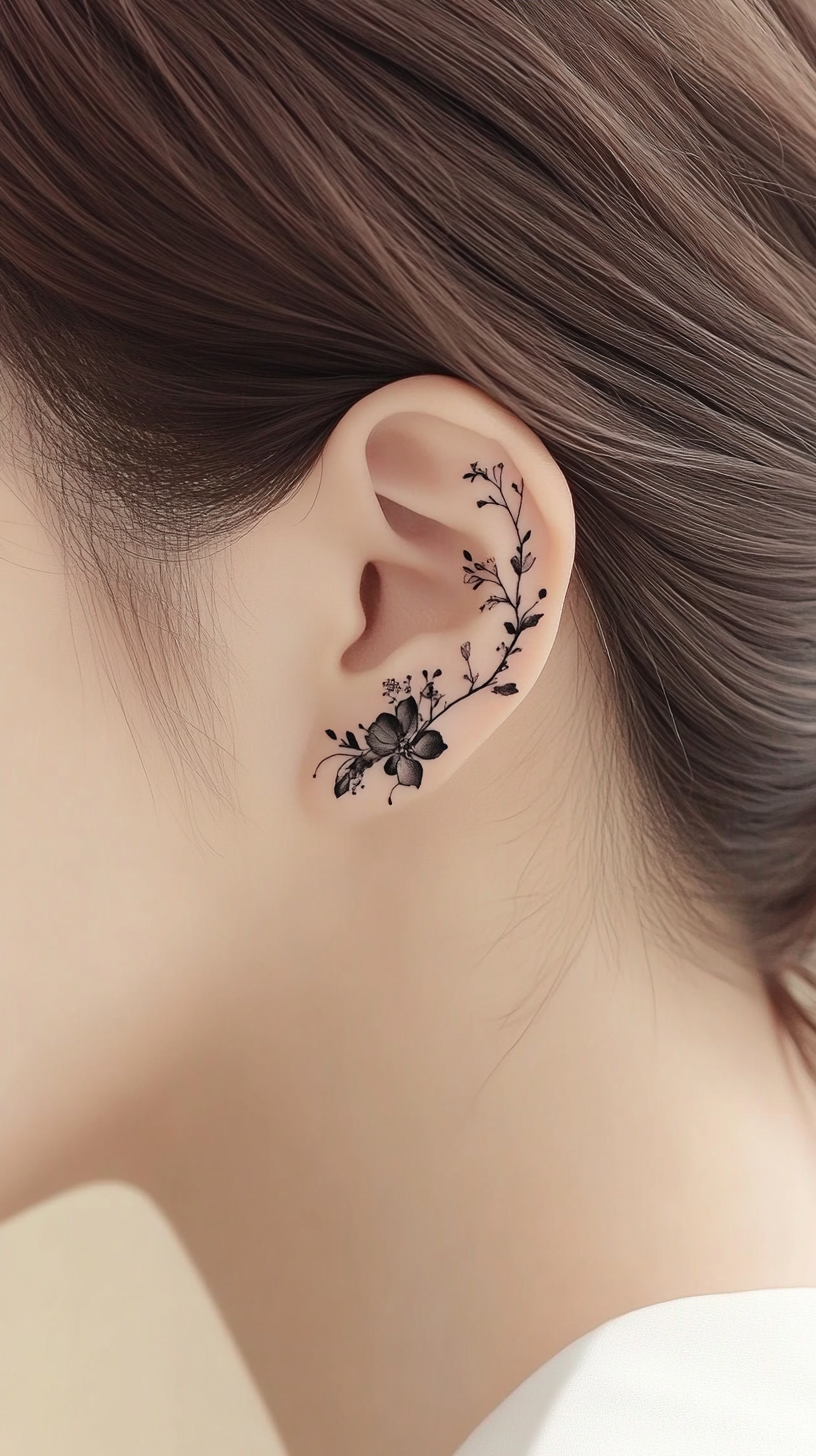
Behind-the-ear tattoos offer a discreet yet trendy option for Korean designs. This placement is ideal for small Korean symbols or single hangeul characters that hold special meaning. You’ll appreciate how these tattoos can remain hidden when hair is down but become a conversation starter when hair is styled up. The intimate nature of this placement makes it perfect for deeply personal Korean words or concepts that you want to keep somewhat private.
Forearm Korean Script
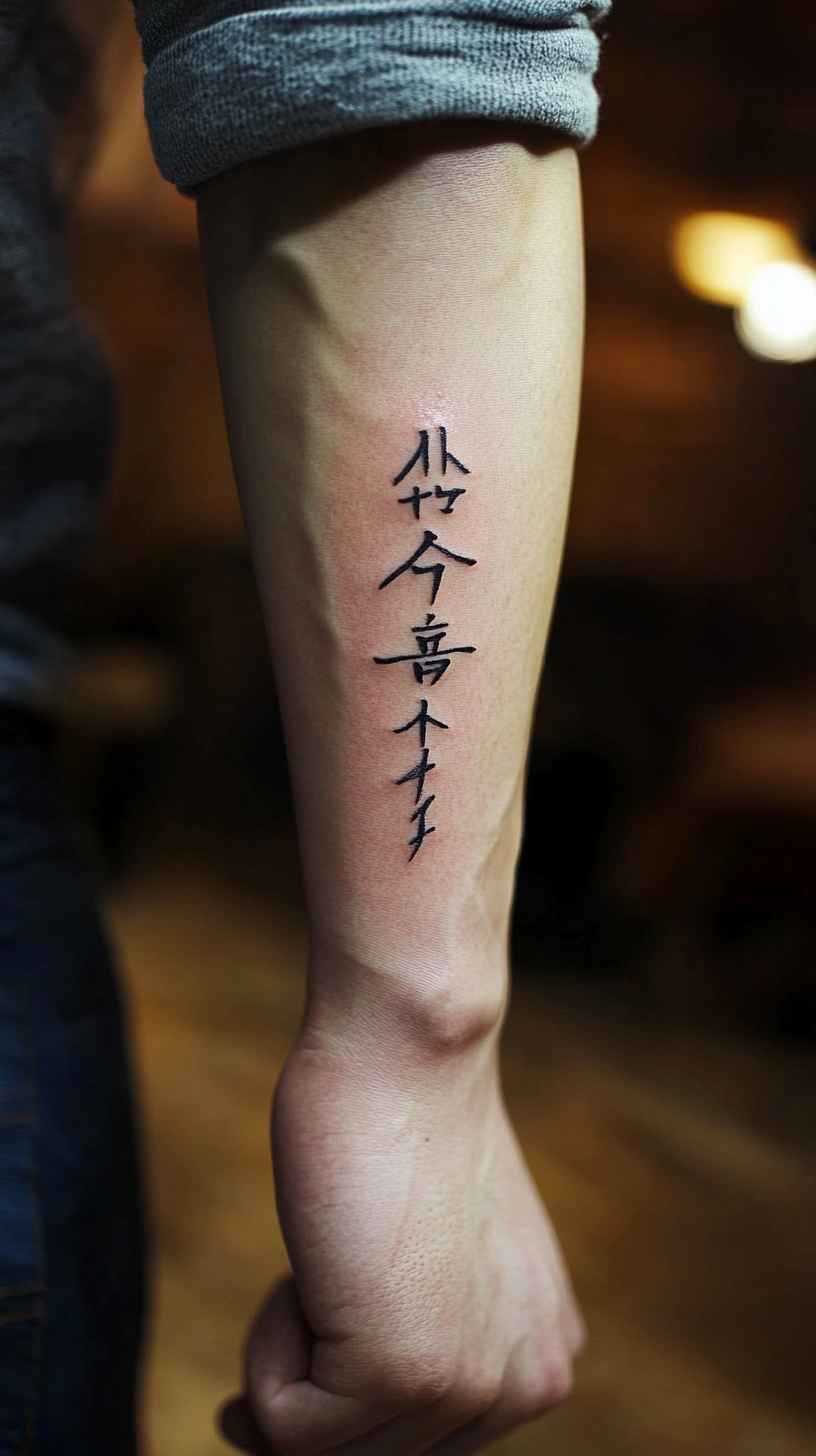
Your forearm provides an excellent canvas for longer Korean phrases or poetry. This placement allows for beautiful vertical script arrangements, honoring the traditional Korean writing direction. Forearm tattoos are easily displayed or concealed depending on your clothing choices, giving you flexibility in professional settings. Many opt for meaningful Korean proverbs or song lyrics that flow elegantly along the length of the forearm.
Finger Korean Tattoos
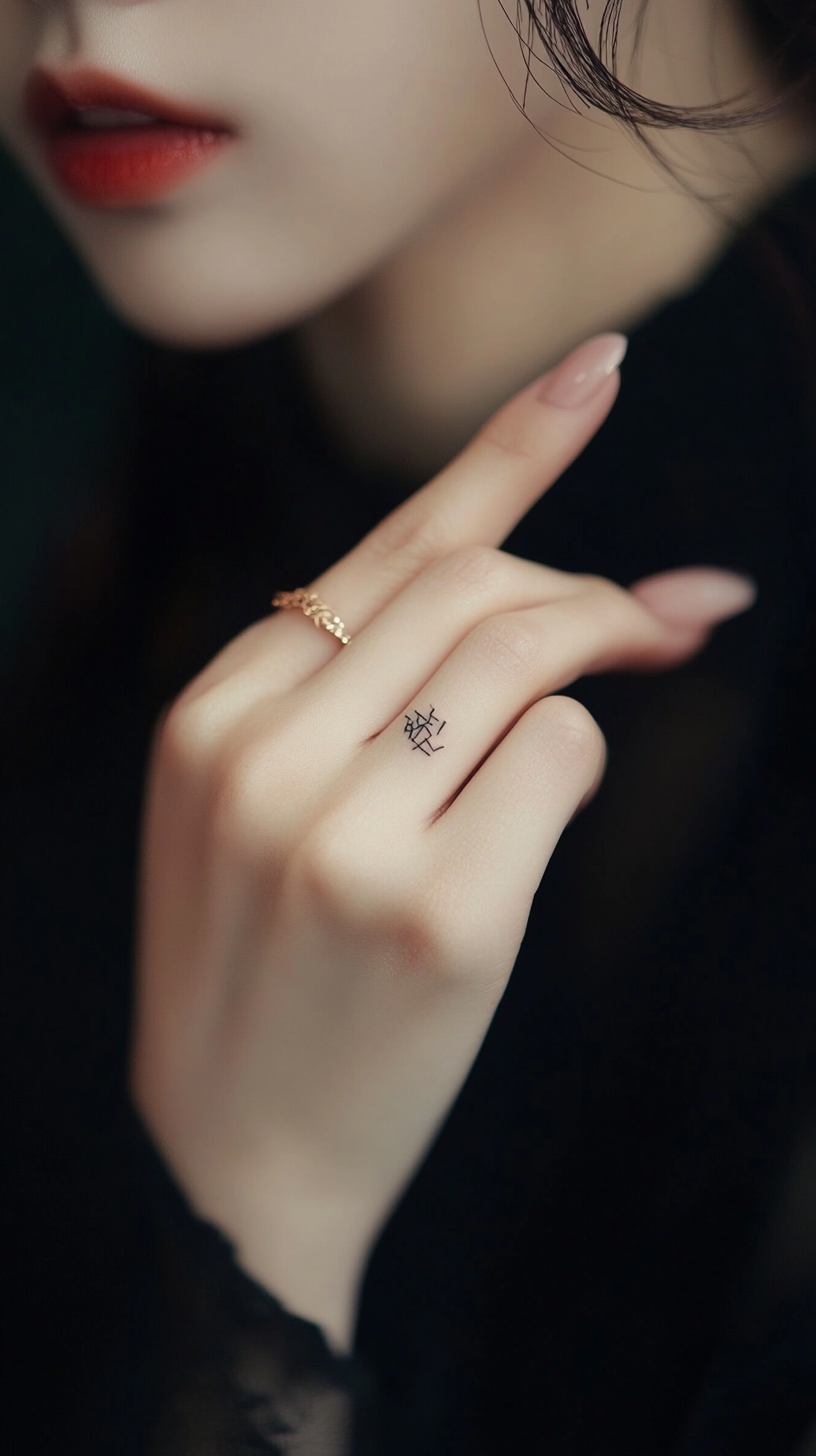
Finger tattoos featuring Korean elements have gained immense popularity among younger women. These small-scale designs typically feature single hangeul characters or tiny traditional symbols. You’ll find these tattoos make subtle yet powerful statements, perfect for those just beginning to explore Korean tattoo art. The placement on fingers creates a delicate, jewelry-like effect that complements rather than overwhelms your natural features.
Ribcage Korean Designs
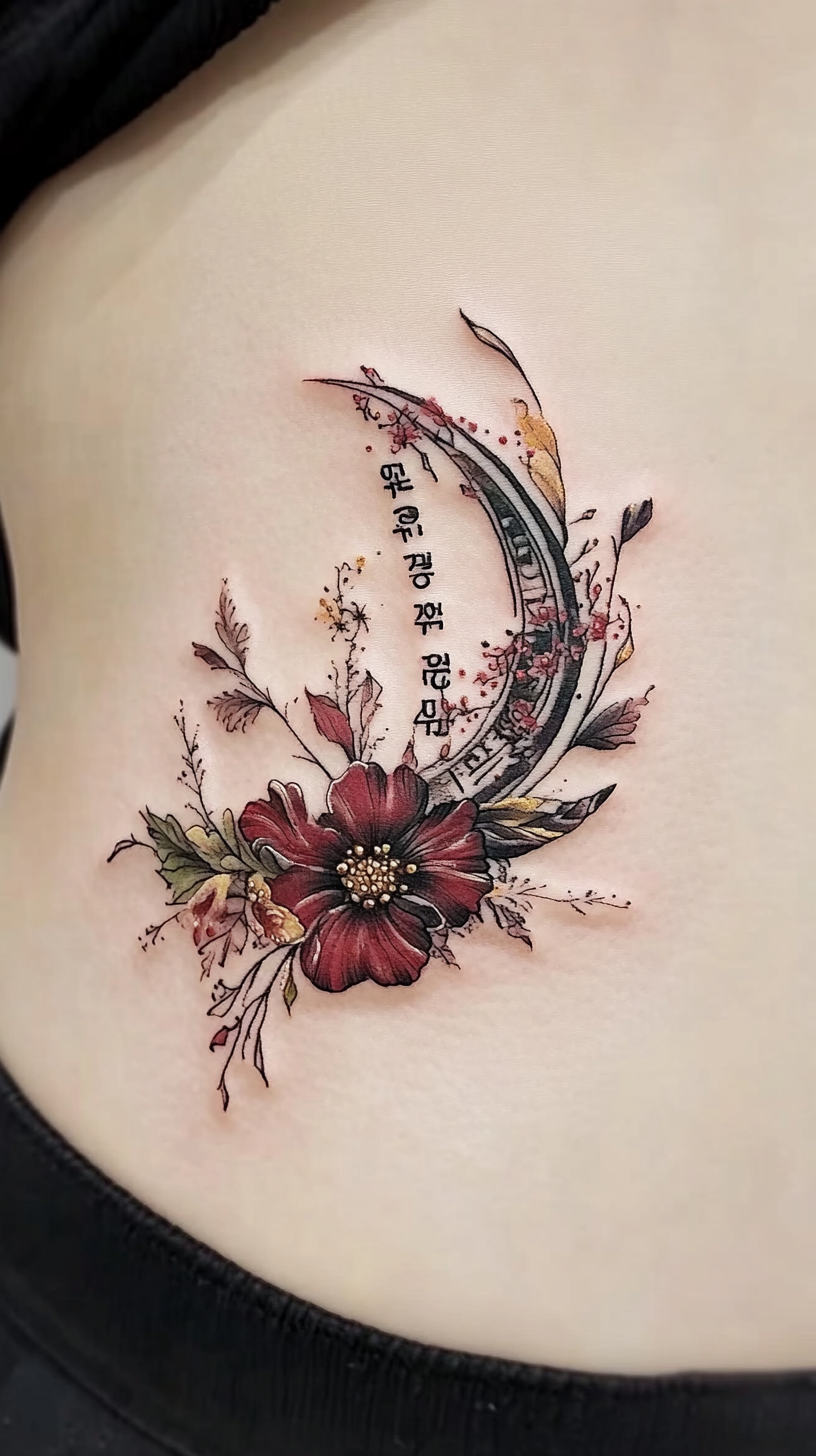
The ribcage offers a more private canvas for larger Korean tattoo compositions. This placement carries important meaning in Korean tattoo culture, often associated with protecting one’s heart and emotions. You’ll find this area perfect for detailed Korean landscapes or larger calligraphy pieces that require more space. The curved surface of the ribcage allows for ever-changing designs that follow the natural contours of your body.
Ankle Korean Symbols
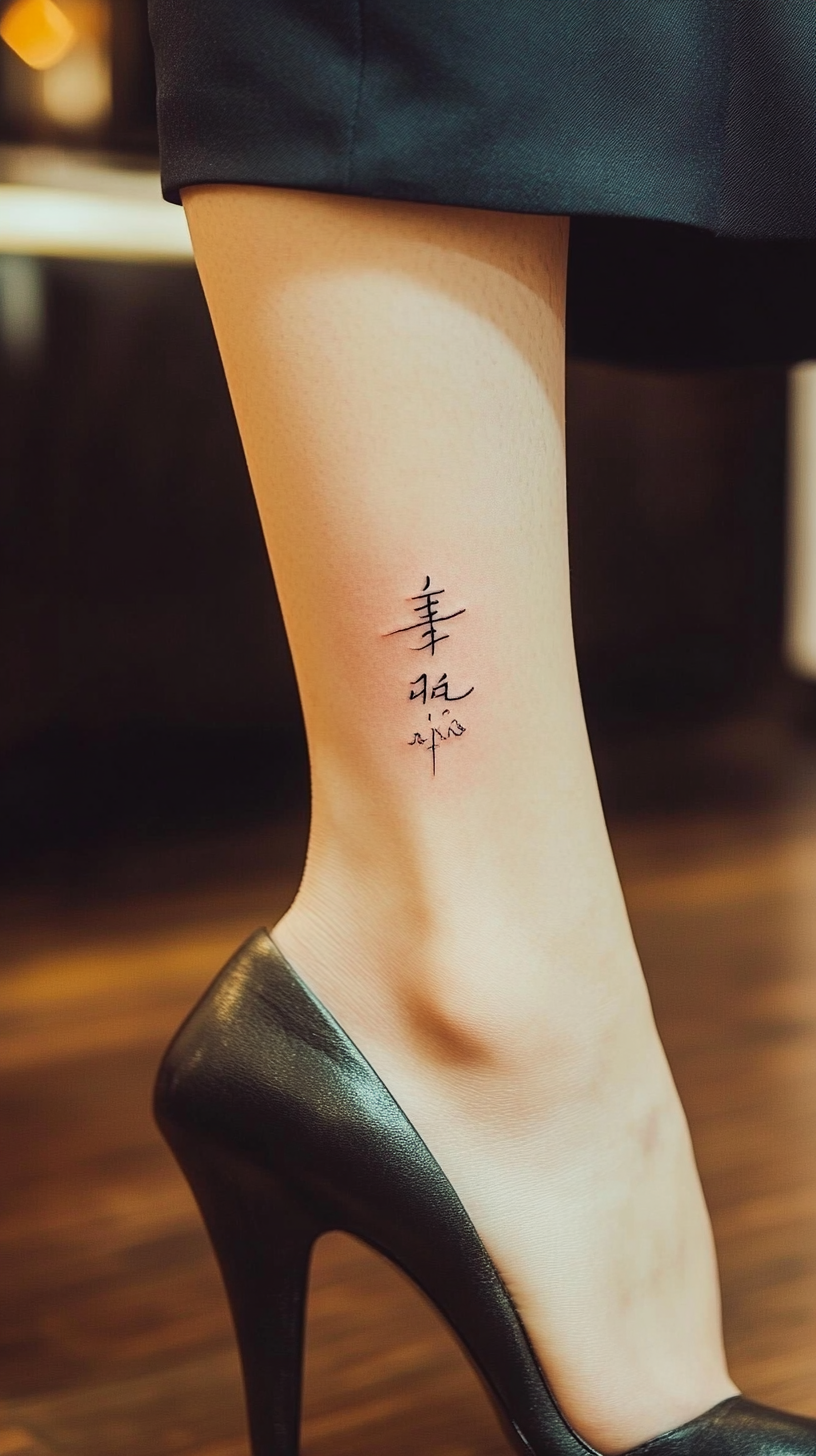
Ankle tattoos provide an elegant placement for Korean-inspired designs, especially popular during summer months. This location is ideal for bracelet-style tattoos featuring connected Korean symbols or a single word wrapped around the ankle. You’ll discover that these tattoos pair beautifully with various footwear while still allowing for easy concealment when needed. Many women choose protective Korean symbols for this placement, symbolizing a solid foundation in life.
Back of Neck Korean Characters

The back of the neck serves as a powerful placement for vertical Korean script. This location carries cultural significance, representing your life’s journey and the path ahead. You’ll find that these tattoos are easily hidden with longer hair styles or proudly displayed with updos and shorter cuts. Single-line hangeul phrases or traditional Korean symbols work particularly well in this narrow yet visually impactful space.
Upper Back Korean Landscapes
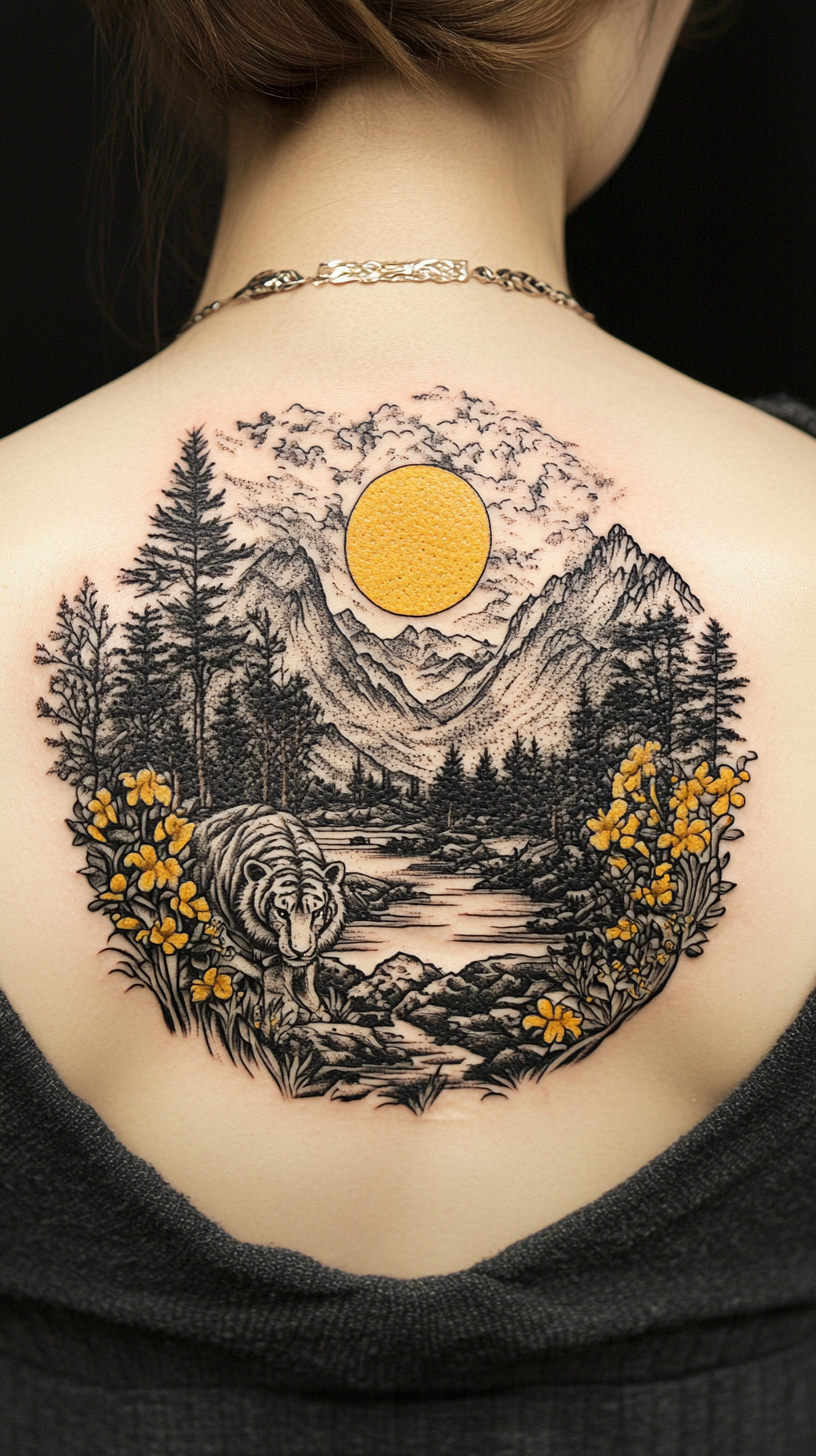
Your upper back provides an expansive canvas for elaborate Korean-inspired scenes. This placement allows for detailed mountain landscapes or tiger designs that hold important cultural meaning. You’ll appreciate how these larger tattoos remain private yet become striking statement pieces when revealed. The flat, broad surface of the upper back accommodates traditional Korean composition techniques that require proper spatial relationships between elements.
Shoulder Korean Florals

Shoulder placements offer excellent visibility for Korean floral designs like cherry blossoms or lotus flowers. This location holds symbolic meaning in Korean culture, representing the burden or beauty one carries through life. You’ll find that shoulder tattoos frame your silhouette beautifully, particularly with sleeveless or off-shoulder garments. Many women choose this placement for Korean flowers that represent personal growth, renewal, or resilience.
Collarbone Korean Script
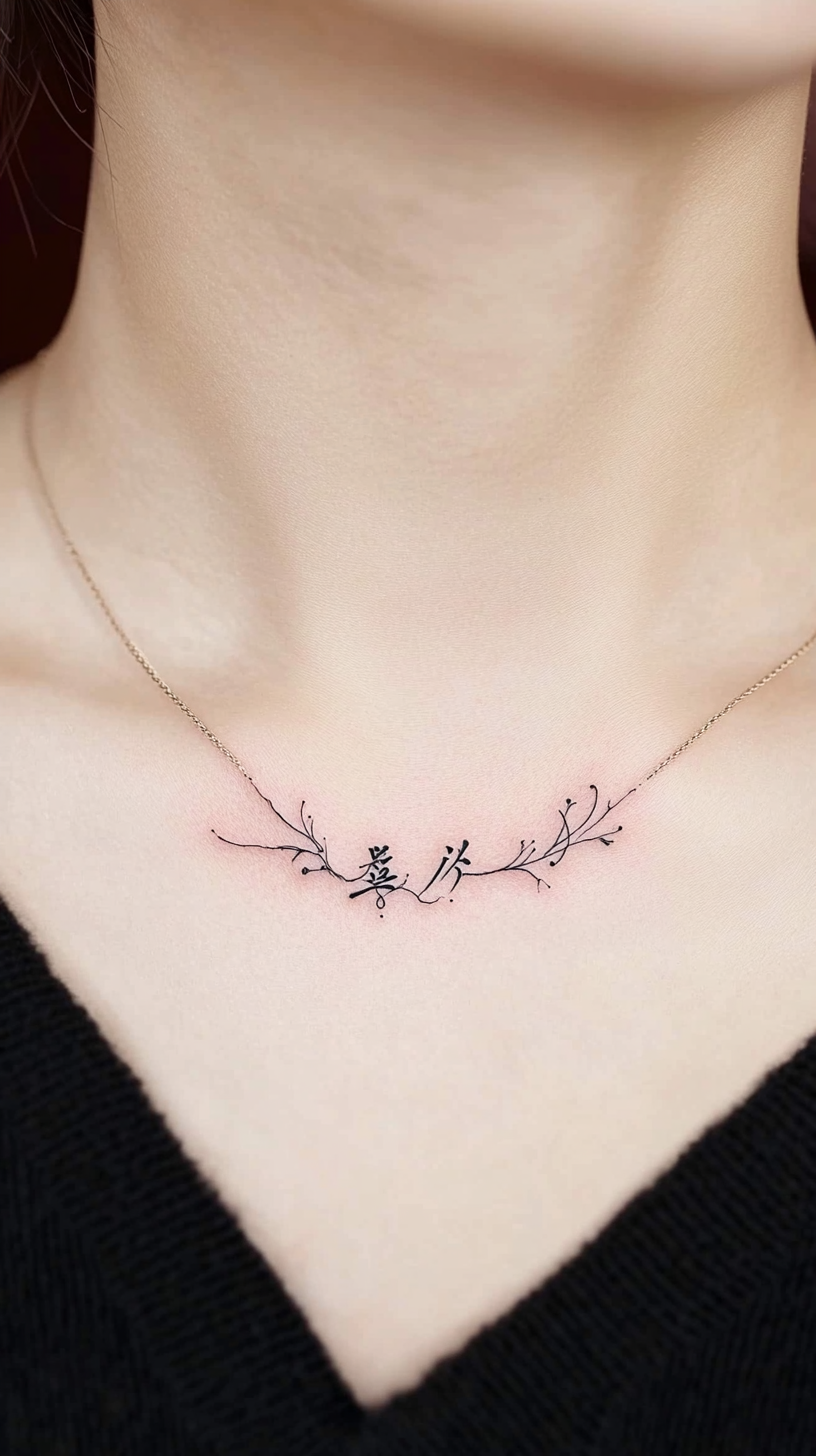
Collarbone tattoos feature elegant horizontal lines that perfectly showcase Korean hangeul. This placement sits at the threshold between public and private, symbolizing the balance between your inner self and outer presentation. You’ll discover that these tattoos create a striking visual when wearing open-neck clothing while remaining easy to conceal when needed. Korean words related to breath, voice, or personal expression work harmoniously with this placement near your throat and heart.
Inner Bicep Korean Symbols

The inner bicep offers a more intimate placement for meaningful Korean designs. This location is traditionally associated with personal strength and protection in Korean tattoo symbolism. You’ll appreciate how these tattoos remain private unless deliberately shown, giving you complete control over their visibility. Many women choose protective Korean symbols or power words for this placement, creating a personal talisman that stays close to the body.
Sternum Korean Tattoos

Sternum placements hold deep significance in Korean tattoo tradition, considered to be spiritually powerful positions. This central body location aligns with concepts of balance and core energy in Korean philosophy. You’ll find these tattoos particularly meaningful as they sit close to your heart, often featuring Korean symbols of protection or centering. The vertical space works beautifully with traditional Korean composition techniques that emphasize harmony and flow.
Korean Tattoo Artists Making Waves Internationally
Sol Tattoo (Seoul)
Sol Tattoo has established itself as one of Korea’s premier tattoo studios, garnering international recognition for delicate line work and watercolor techniques. Founded by artist Sol, this studio specializes in creating ethereal designs that combine traditional Korean elements with modern aesthetics. Many clients travel specifically to Seoul for Sol’s signature style featuring fine-line hangeul characters integrated with natural elements. You’ll find Sol’s work regularly featured in international tattoo magazines and exhibitions across Europe and North America.
Zihee Tattoo
Zihee has developed a distinctive style that blends Korean cultural elements with vibrant watercolor techniques. Based in Seoul but frequently traveling for guest spots at studios in New York, London, and Berlin, Zihee’s work is instantly recognizable for its dreamlike quality and fluid color transitions. Her Instagram following exceeds 650,000 fans, showcasing her unique approach to botanical designs and abstract interpretations of traditional Korean symbols. Zihee’s waiting list often extends months in advance, with clients specifically seeking her signature watercolor aesthetic.
Playground Tattoo
Founded by artists Hongdam and Zzizzi, Playground Tattoo has become synonymous with minimalist Korean tattoo design. Their Seoul-based studio has gained international acclaim for single-line illustrations and geometric interpretations of traditional Korean imagery. Hongdam’s black work illustrations have been featured in art galleries across Asia and Europe, while Zzizzi’s delicate micro tattoos attract clients from Australia, Canada, and beyond. Their approach combines contemporary design principles with subtle nods to Korean heritage.
Studiobysol
Studiobysol has pioneered a fusion of traditional Korean artistic elements with contemporary tattoo techniques. The collective of artists has developed a important following in the United States and Europe for their distinctive style featuring detailed animal motifs from Korean folklore. Their most requested designs incorporate traditional Korean tigers and phoenixes rendered with modern linework and subtle shading. You’ll find their artists making guest appearances at major tattoo conventions in Los Angeles, Chicago, and New York annually.
Pitta KKM
Specializing in hyperrealistic portraits and detailed scenery, Pitta KKM has elevated Korean tattoo artistry to new heights internationally. Based in Seoul with frequent collaborations in studios across Japan and the United States, Pitta’s work is known for incorporating elements of traditional Korean industry painting into contemporary body art. Clients particularly seek out Pitta’s stunning mountain scenes and architectural tattoos inspired by historic Korean temples. The studio’s portfolio showcases remarkable attention to detail and dimensional shading techniques.
Doy
Doy has revolutionized the approach to Korean traditional imagery in tattoos, creating photorealistic designs that honor cultural heritage while pushing artistic boundaries. Working from Seoul but traveling extensively for international conventions, Doy’s black and gray portraiture has earned awards at competitions in Italy, Spain, and Canada. The studio specializes in creating immersive storytelling through skin art, often incorporating narrative elements from Korean folklore and history. Doy’s technical precision has influenced a generation of tattoo artists across Asia.
Silo (Seunghyun Jo)
Silo has developed a devoted international following for combining delicate line work with elements of traditional Korean brush painting. Operating from a private studio in Seoul, Silo’s appointment books fill months in advance with clients from across North America and Europe. The artist is particularly renowned for creating contemporary interpretations of hanbok-inspired designs and natural imagery. Silo’s work appears regularly in digital art publications, with over 420,000 Instagram followers tracking the evolution of their distinctive aesthetic.
Jabba Tattoo
Jabba Tattoo has gained international recognition for pioneering new techniques in color saturation while honoring traditional Korean artistic principles. The Seoul-based studio, led by artist Jabba, specializes in vibrant neo-traditional designs that incorporate symbolic elements from Korean culture. Their signature style features bold outlines with sophisticated color gradients that maintain their vibrancy over time. Jabba frequently conducts workshops at international tattoo conventions, sharing techniques that have influenced artists across the global industry.
Nando
Nando has emerged as a leading figure in Korean minimalist tattoo design, with a client base spanning from Seoul to San Francisco and London. Working exclusively in black ink, Nando’s distinctive style features ultra-fine line work and precision dot work that creates ethereal representations of traditional Korean symbols. The studio has become particularly known for creating contemporary versions of protective symbols and spiritual imagery drawn from Korean shamanic traditions. Nando’s approach emphasizes clean execution and meaningful symbolism.
Vanco
Vanco has established a global reputation for intricate script tattoos that showcase the beauty of hangeul characters. Operating from a studio in Hongdae, Seoul, Vanco attracts international clients seeking authentic Korean calligraphy with contemporary flair. Their portfolio demonstrates exceptional skill in balancing traditional calligraphic principles with modern aesthetic sensibilities. Vanco frequently collaborates with Korean language experts to ensure authentic representation of text-based tattoos, making them a trusted source for those seeking meaningful Korean phrases and poetry as body art.
Navigating Tattoo Culture and Taboos in Korea
The Historical Stigma of Tattoos in Korean Society
Tattoos in Korea have historically faced important social stigma rooted in Confucian values that emphasize preserving the body you received from your parents. For centuries, tattoos were associated with criminals and outcasts, as the practice of skin marking (문신, “munshin”) was used to brand criminals during the Joseon Dynasty (1392-1910). These punitive tattoos created deep-seated negative perceptions that still linger today.
In traditional Korean society, having a clean, unmarked body was considered a sign of respect for one’s ancestors. Permanent body modifications were viewed as dishonorable and associated with:
- Criminal branding – Visible facial tattoos were forcibly given to convicts as punishment
- Social outcasts – People with tattoos were often excluded from mainstream society
- Gangster associations – Organized crime groups adopted tattoos as symbols of membership
- Limited professional opportunities – Those with visible tattoos faced severe employment discrimination
Even into the late 20th century, tattoos remained heavily stigmatized, with many older Koreans still holding negative views shaped by these historical contexts.
The Changing Perception of Korean Tattoos Today
Korean tattoo culture is experiencing a remarkable transformation, especially among younger generations who view tattoos as artistic self-expression. Instagram and K-pop have played pivotal roles in this shift, with Korean celebrities like Jungkook from BTS proudly displaying their ink. Even though these changes, important legal and social challenges persist:
- Legal gray area – Tattoos exist in a complex regulatory space where only medical professionals can legally perform tattoos, driving many artists underground
- Workplace restrictions – Many corporate environments still prohibit visible tattoos, forcing professionals to choose concealable designs
- Generational divide – While youth embrace tattoos, older generations often maintain traditional negative perceptions
- Censorship in media – Korean television often blurs tattoos on performers, reflecting ongoing sensitivity
- Tourism influence – International visitors seeking Korean tattoo styles have helped legitimize the art form
The modern Korean tattoo scene thrives even though these challenges, with Seoul neighborhoods like Hongdae becoming hubs for innovative tattoo studios. Many Korean artists have developed distinctive micro-tattoo and fine-line styles that appeal to those seeking subtle designs that can be easily concealed when necessary.
For foreign visitors interested in getting tattooed in Korea, understanding this cultural context is essential. While attitudes are evolving, showing respect for traditional sensitivities by choosing discreet placement options demonstrates cultural awareness. Many studios cater specifically to international clients, creating a bridge between Korean artistic traditions and global tattoo culture.
Korean Celebrity Tattoo Trends Worth Following
K-Pop Idols’ Minimalist Script Tattoos
K-pop stars like BTS’s Jungkook and GOT7’s Jackson Wang have popularized delicate script tattoos with profound meanings. Jungkook’s “ARMY” hand tattoo pays tribute to his fans, while his “Rather be dead than cool” phrase showcases his authentic personality. These minimalist script designs use thin, single-needle techniques that create elegant, barely-there statements. Consider getting a meaningful Korean phrase or word that resonates with your personal journey for a subtle yet impactful tattoo.
G-Dragon’s Artistic Collage Style
G-Dragon, BIGBANG’s leader and fashion icon, sports an impressive collection of tattoos that form a visual narrative across his body. His patchwork approach combines various symbols, phrases, and images that hold personal significance. This collage-style tattooing allows you to build a collection over time, adding pieces that represent different chapters of your life. Start with a foundational piece and gradually expand with complementary designs that tell your unique story.
Blackpink Lisa’s Discreet Behind-Ear Designs
Lisa from Blackpink has embraced the trend of placing small, meaningful tattoos behind the ear. Her tiny moon tattoo exemplifies how Korean celebrities often choose inconspicuous placements that can be easily concealed or displayed. Behind-ear tattoos are perfect for professional environments where visible tattoos might be frowned upon, while still allowing for personal expression. Small Korean symbols or minimalist designs work beautifully in this location.
Jay Park’s Bold Traditional-Modern Fusion
Jay Park has revolutionized Korean tattoo aesthetics by boldly displaying extensive artwork that blends traditional Korean imagery with contemporary design elements. His back and chest pieces incorporate tiger motifs and traditional patterns executed with modern techniques. This fusion approach honors Korean heritage while embracing current tattoo artistry. Consider incorporating traditional Korean symbols like the tiger or phoenix with a modern execution for a similar effect.
HyunA’s Delicate Finger Tattoos
K-pop artist HyunA has popularized dainty finger tattoos with Korean lettering and subtle symbols. Her “TEMPTATION” tattoo and small cross designs demonstrate how even tiny tattoos can make a statement. Finger tattoos are perfect for those wanting visible yet understated art. Korean characters or symbols placed on fingers create an elegant, personalized accessory that complements your style without overwhelming it.
Jessi’s Empowering Statement Pieces
Korean-American rapper Jessi embraces bold, statement tattoos that reflect her confident personality. Her chest piece with the phrase “UNSTOPPABLE” exemplifies how tattoos can serve as personal mantras. This trend focuses on placing empowering Korean or English words in visible locations as daily reminders of your strength and values. Choose a word or phrase that motivates you, executed in stylish Korean typography for maximum impact.
Lee Joon-gi’s Symbolic Arm Bands
Actor Lee Joon-gi showcases elegant arm band tattoos with deep personal meanings. These horizontal designs wrap around the arm, creating a bracelet-like effect that’s both subtle and striking. Korean armband tattoos often incorporate traditional patterns, hangul script, or symbolic elements that hold personal significance. This placement works beautifully for showcasing Korean cultural elements in a contained, purposeful design.
CL’s Watercolor Abstract Designs
Former 2NE1 member CL sports artistic tattoos that use watercolor techniques to create fluid, abstract designs. This approach incorporates traditional Korean color theory with contemporary application methods. Watercolor tattoos featuring soft washes of color with minimal outlining create ethereal pieces that appear painted onto the skin. Consider Korean flowers or landscapes executed in this dreamy style for a modern twist on traditional imagery.
Dean’s Micro Text and Meaningful Dates
R&B artist Dean features many small text tattoos and important dates in minimalist designs across his body. This trend focuses on commemorating important life moments through numbers and brief phrases. Korean birth years, special dates, or short meaningful phrases in hangul make for personal yet subtle tattoos. This approach allows you to carry important memories with you in an artistic, unobtrusive way.
IU’s Hidden Symbolic Tattoos
Singer-songwriter IU has embraced the trend of placing meaningful tattoos in locations that aren’t immediately visible. Her tattoo choices reflect a preference for personal significance over public display. Hidden tattoos on ribs, inner arms, or behind the ankle allow you to express yourself through Korean imagery without making it the center of attention. These placements are perfect for more traditional Korean symbols that hold private meaning.
Combining Korean Elements With Other Tattoo Styles
Korean-American Fusion Designs

Korean-American fusion tattoos blend Korean cultural elements with Western tattoo traditions. You can combine hangeul script with American traditional bold lines and bright colors for a striking contrast. These designs often feature Korean symbols like tigers or phoenixes rendered in American traditional style with bold outlines and limited color palettes. The fusion creates a unique cultural bridge that honors both heritages while creating something entirely new.
Neo-Traditional Korean Designs
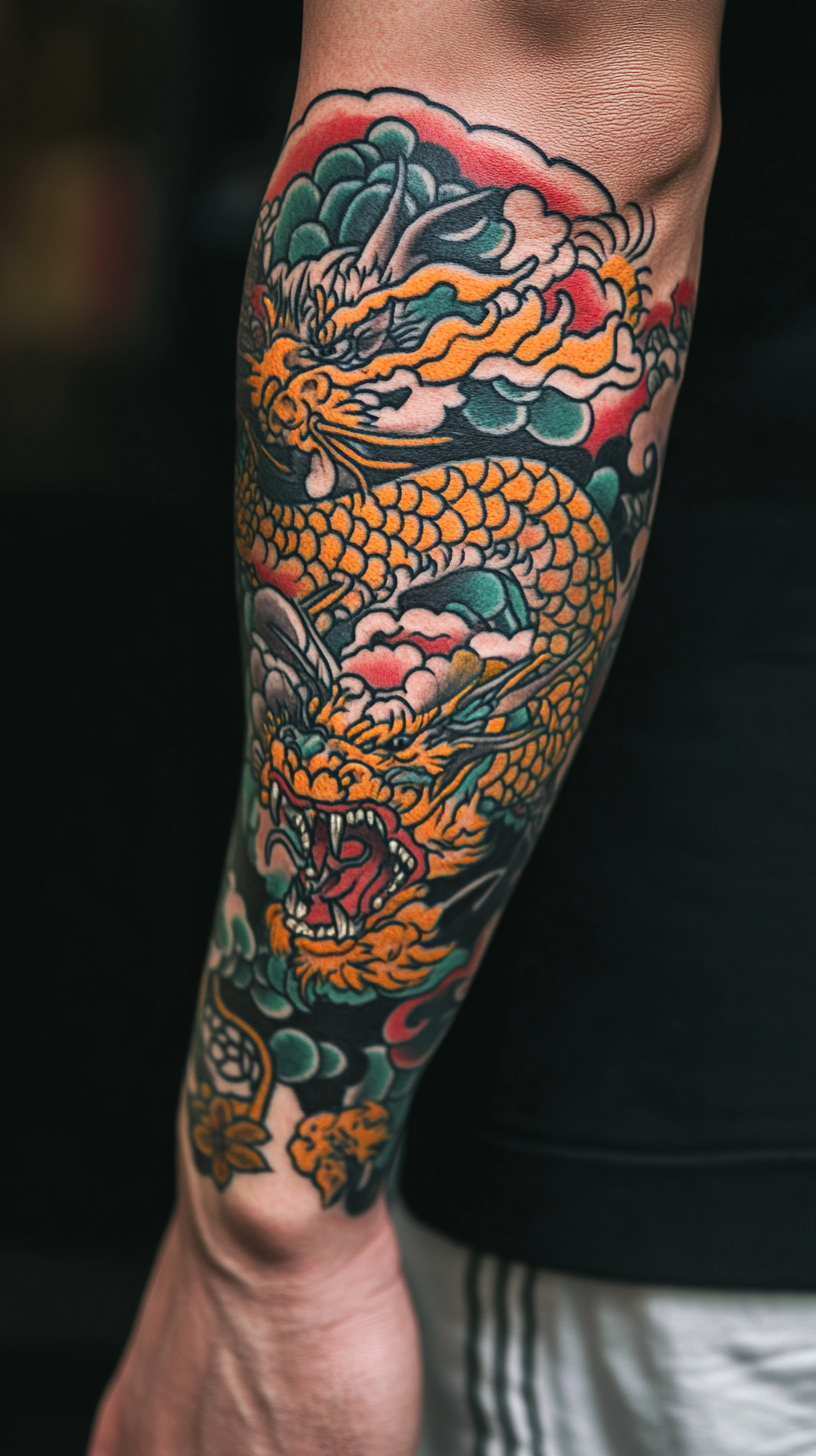
Neo-traditional tattoos with Korean elements offer a fresh interpretation of classic symbols. You’ll find these designs incorporate Korean imagery like tigers, dragons, or dokkaebi (goblins) with the characteristic bold lines and enhanced color palette of neo-traditional style. Artists often add dimensional shading and decorative elements while maintaining the symbolic meaning of traditional Korean motifs, creating pieces that are both modern and culturally important.
Korean Blackwork Combinations

Blackwork tattoos featuring Korean elements emphasize strong silhouettes and negative space. When you choose this style, artists typically render traditional Korean imagery like mountains, tigers, or hanbok silhouettes using solid black ink with strategic empty spaces. The stark contrast creates dramatic visual impact while honoring Korean aesthetic principles of balance and harmony. This style works particularly well for larger pieces where the bold shapes can create a powerful statement.
Korean Minimalism Meets Fine Line Art
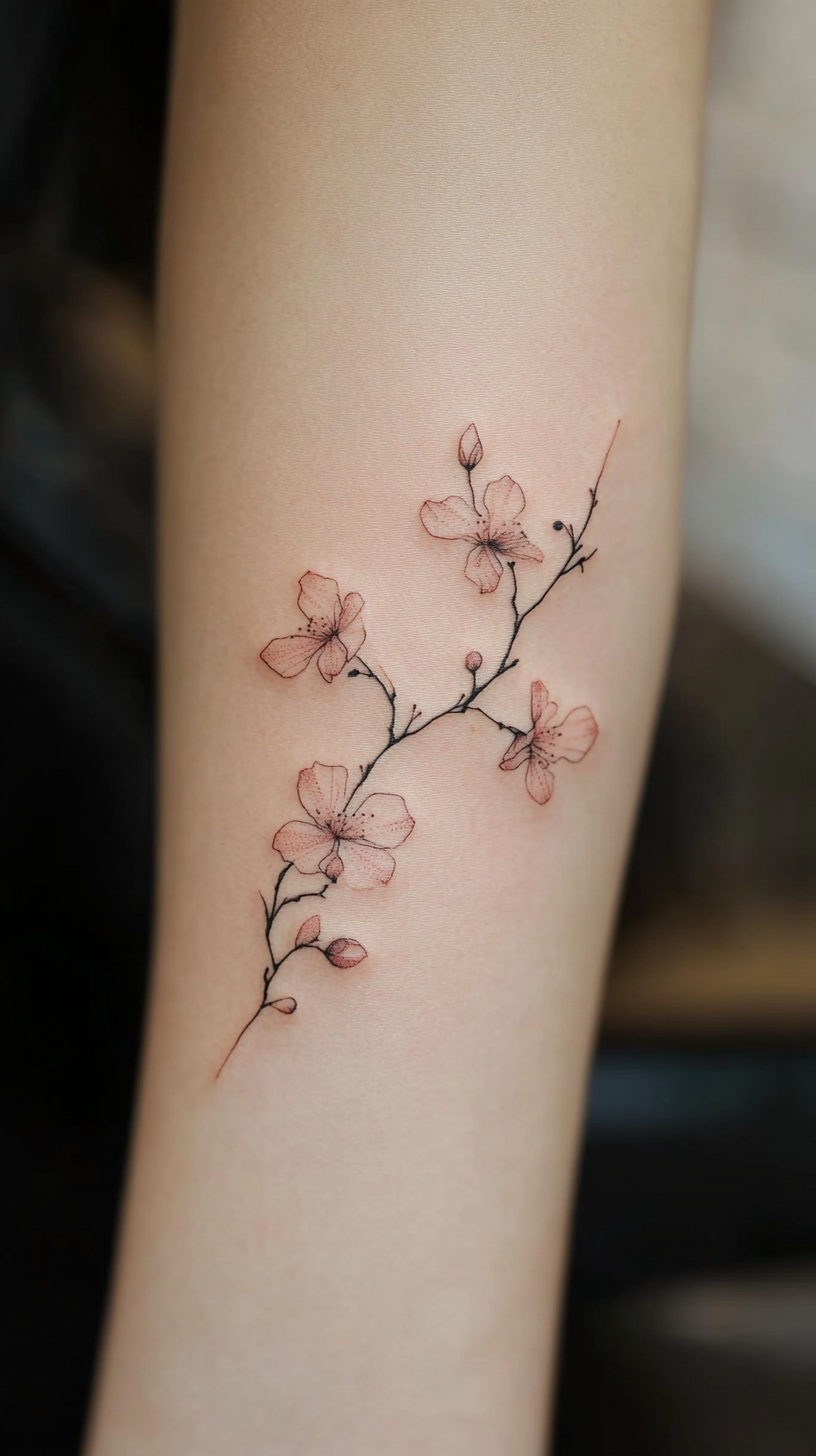
Korean minimalist elements combined with fine line tattoos create delicate, elegant designs. Your tattoo might feature a single hangeul character or simple Korean symbol executed with ultra-thin, precise lines. These designs often incorporate subtle dot work or minimal shading to add dimension without overwhelming the simplicity of the concept. The result is a sophisticated, understated piece that carries important meaning while maintaining a contemporary aesthetic.
Geometric Korean Patterns
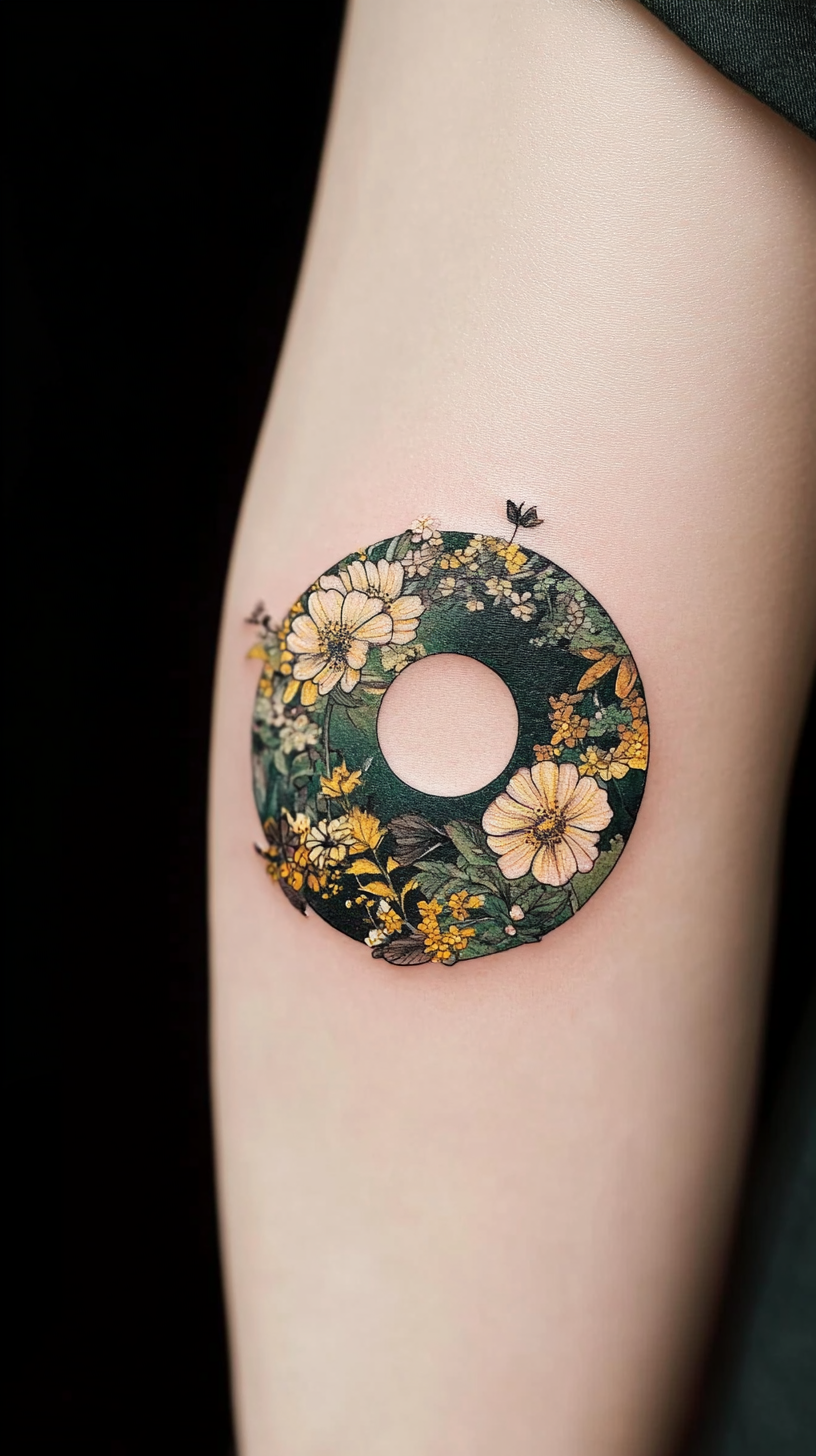
Geometric interpretations of Korean symbols bring modern structure to traditional imagery. You can transform classic Korean motifs like dancheong patterns or taegeuk symbols into precise geometric compositions using clean lines and perfect symmetry. Artists often incorporate sacred geometry principles to enhance the spiritual significance of Korean elements. These designs appeal to those seeking a contemporary aesthetic while maintaining a connection to Korean cultural heritage.
Korean Calligraphy With Watercolor Backgrounds
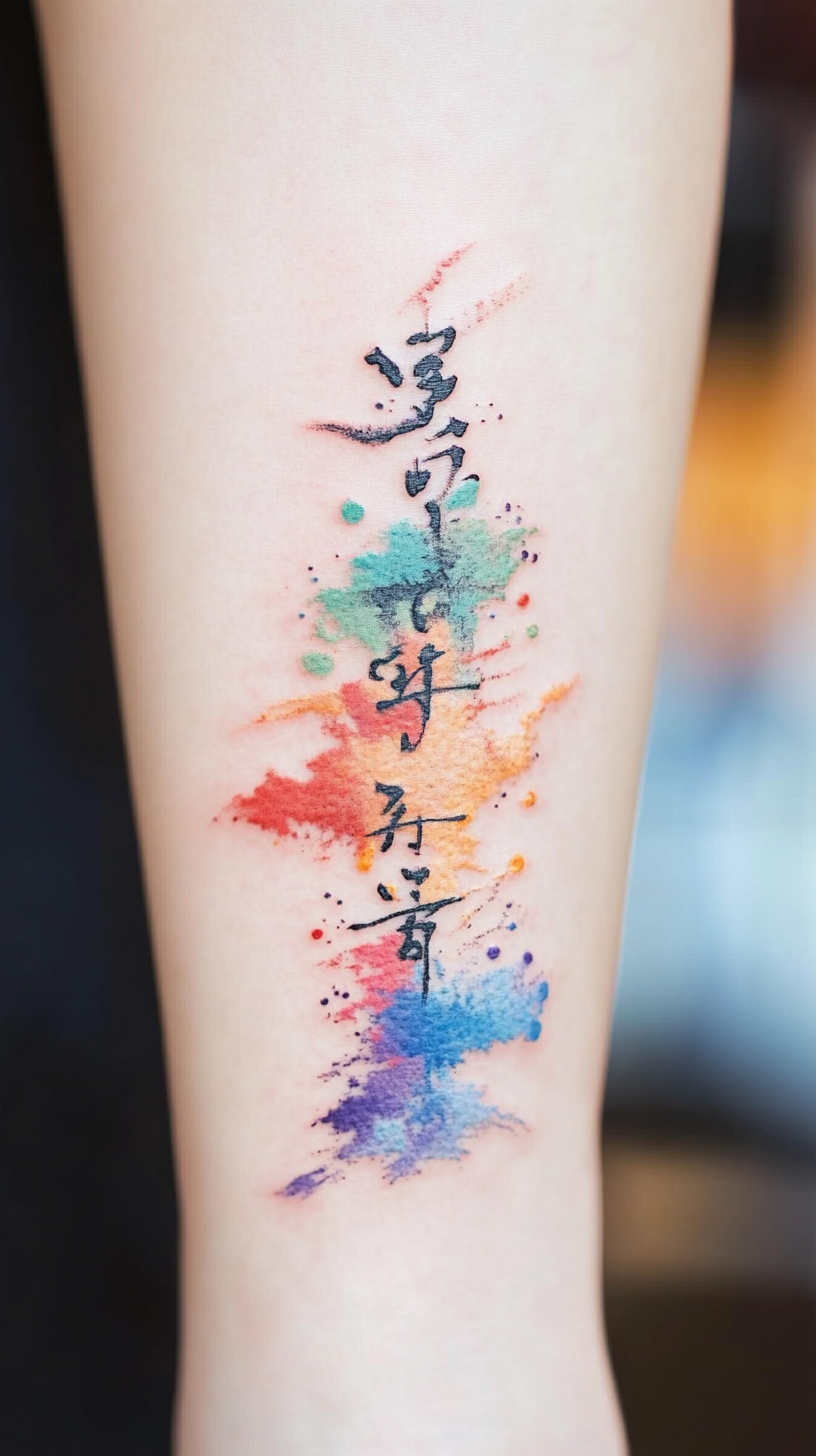
Korean calligraphy set against watercolor backgrounds creates artistic contrast between structure and fluidity. Your tattoo might feature bold hangeul characters or traditional sayings with vibrant, flowing watercolor elements that represent Korean landscapes or abstract emotions. The juxtaposition of precise lettering against free-flowing color creates visual interest while symbolizing the balance between discipline and expression in Korean culture. These pieces often incorporate traditional Korean color palettes for authenticity.
Korean-Inspired Surrealism
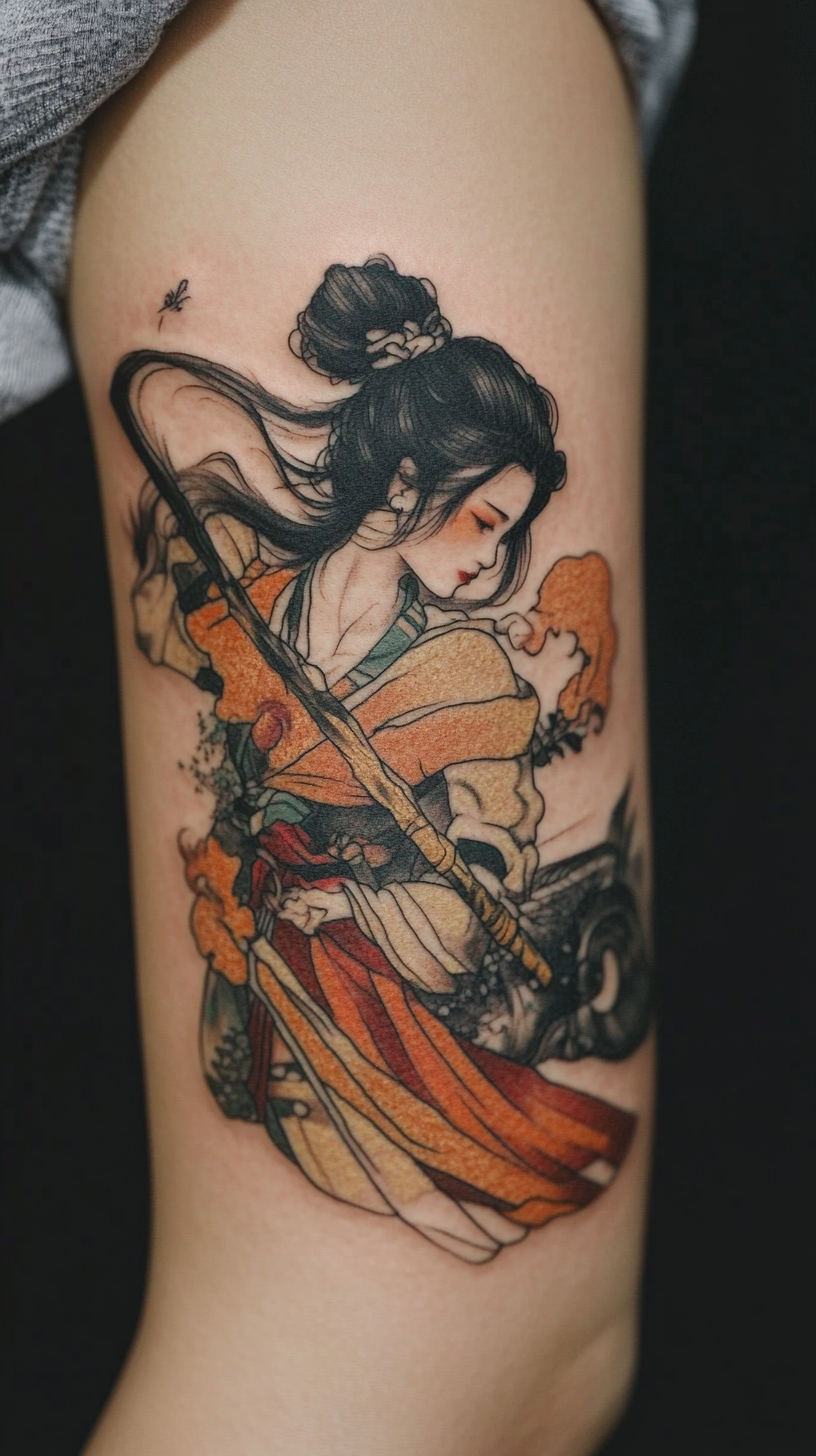
Surrealist tattoos incorporating Korean elements blend dreamlike imagery with cultural symbols. You might choose designs featuring Korean folk creatures like dokkaebi or kumiho (nine-tailed fox) in impossible scenes or transformations. Artists often play with scale, perspective, and unexpected combinations to create thought-provoking pieces that honor Korean mythology while pushing creative boundaries. These tattoos make excellent conversation starters while expressing deep connection to Korean narrative traditions.
Korean Folklore in Illustrative Style
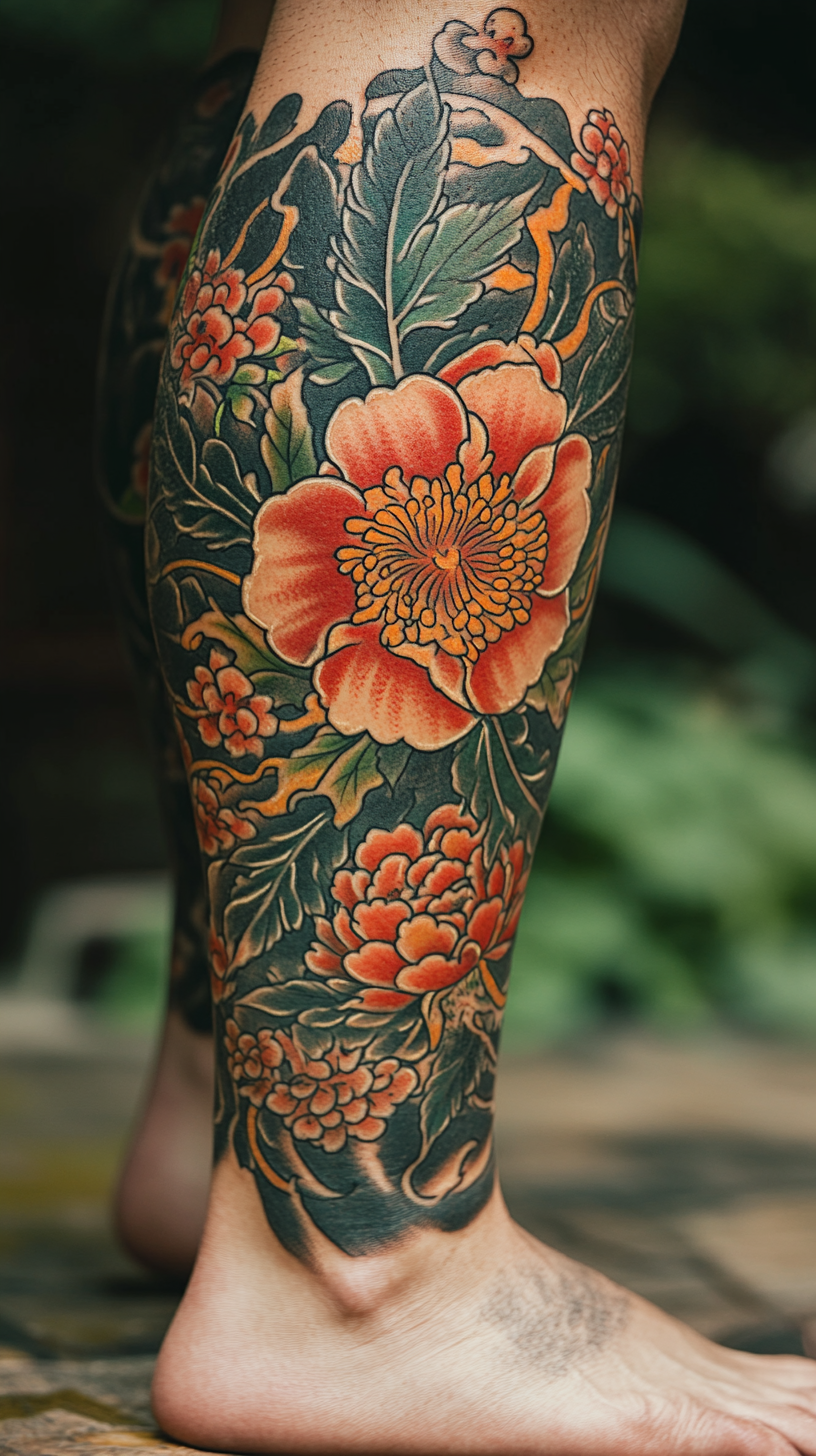
Illustrative tattoos bring Korean folklore to life with detailed narrative scenes. Your design might depict stories like the tale of Dangun (Korea’s mythical founder) or Shimcheong (the devoted daughter) using rich details and storybook aesthetic. Artists typically use varied line weights, subtle shading, and careful composition to create pieces that read like pages from an illustrated Korean folk tale. These tattoos preserve cultural stories while creating visually captivating body art.
Korean Floral With Japanese Influences
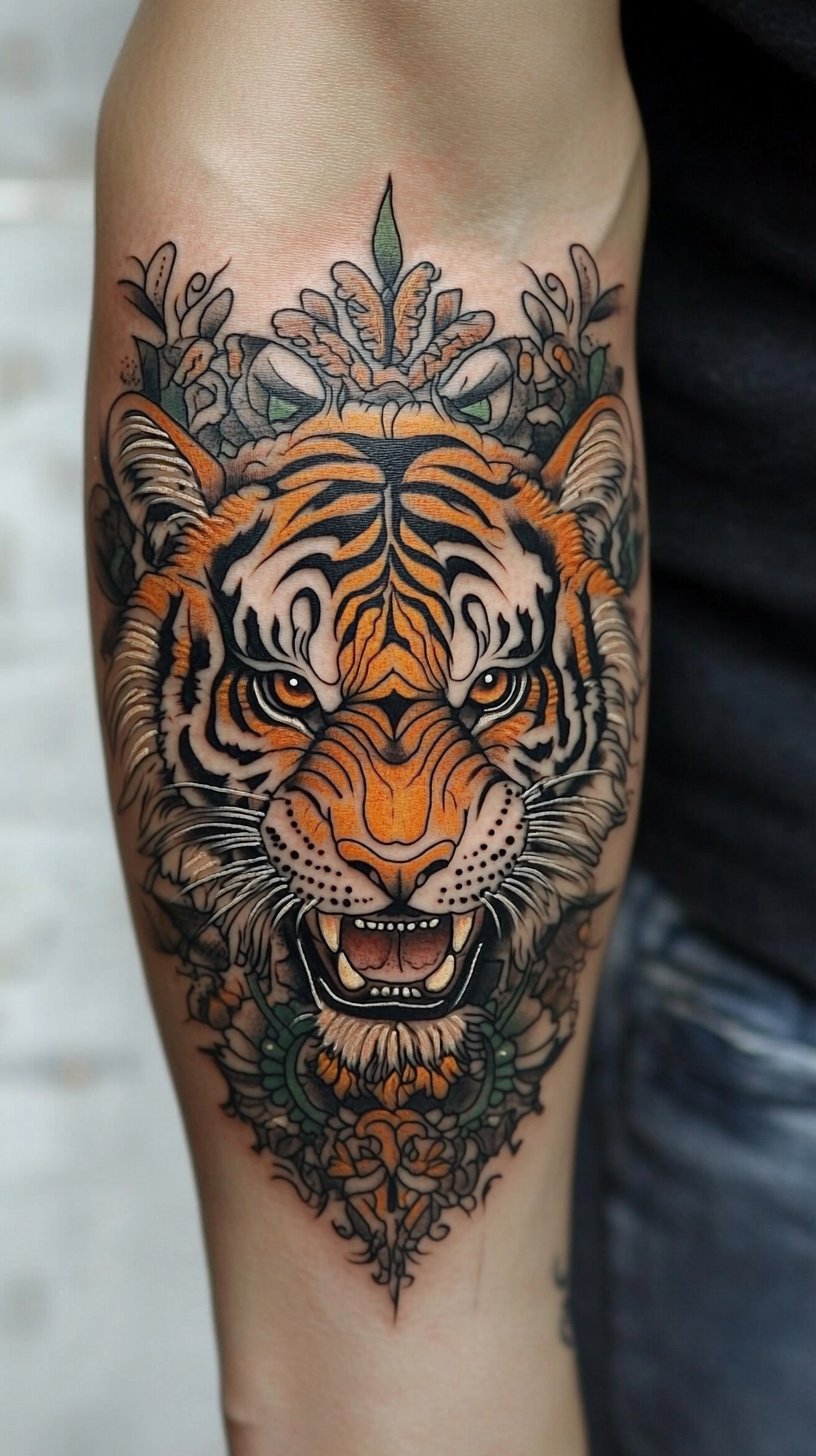
Korean floral designs with Japanese tattoo influences create harmonious East Asian fusion. You’ll find these tattoos often combine Korean motifs like mugunghwa (hibiscus) or cherry blossoms with Japanese irezumi techniques like flowing water backgrounds or wind bars. Artists typically maintain distinct elements from each tradition while creating a cohesive composition that honors both artistic lineages. These pieces acknowledge the historical connections between Korean and Japanese art while creating something distinctly contemporary.
Dotwork Korean Symbols
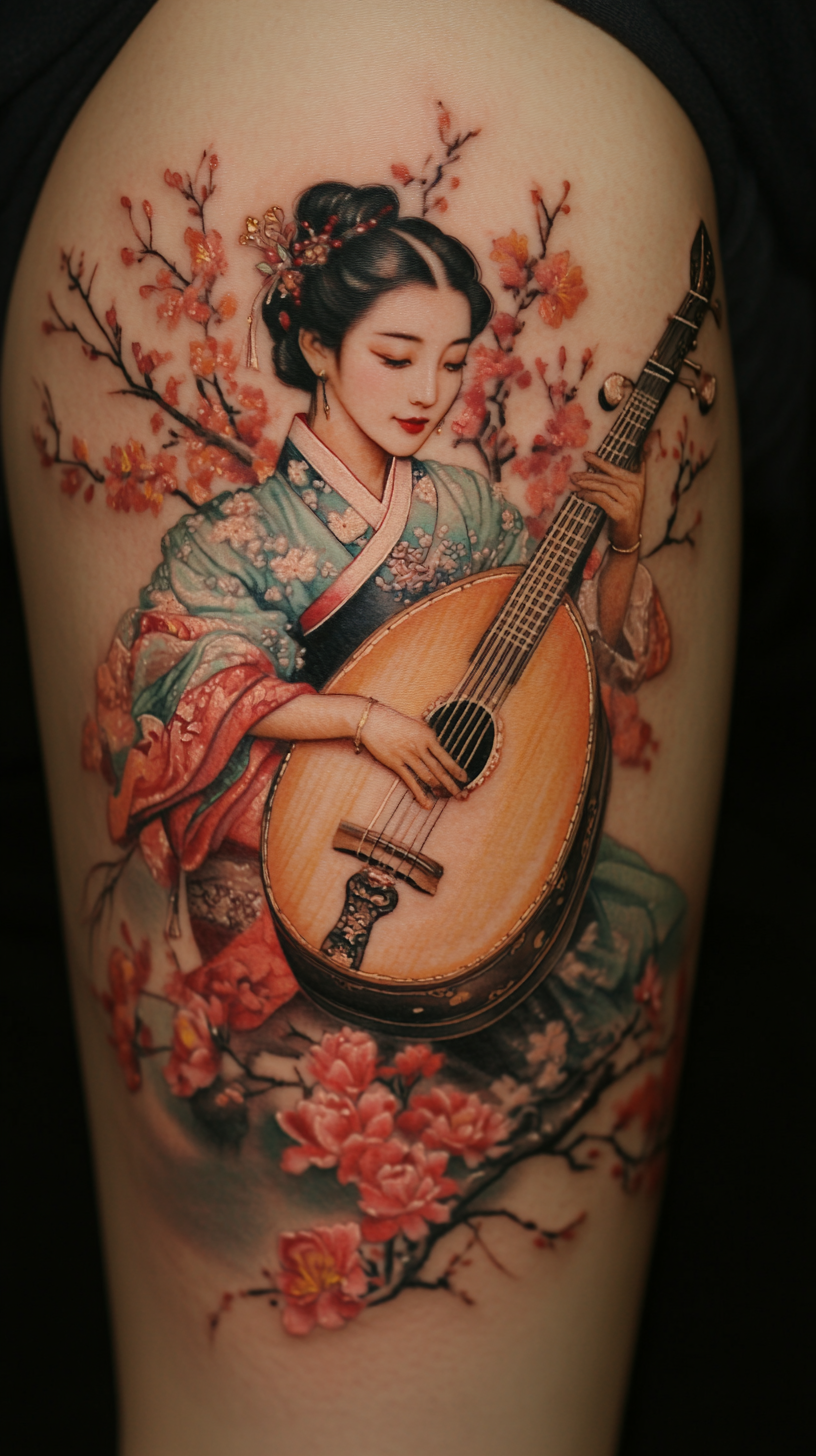
Dotwork techniques bring texture and dimension to Korean symbolic tattoos. Your tattoo might feature traditional Korean imagery like tigers, mountains, or talismanic symbols composed entirely of meticulously placed dots. Artists create depth and shading through dot density variations rather than solid lines or color fills. This technique allows for subtle gradients and texture that give traditional Korean symbols a contemporary feel while maintaining their cultural significance.
Realism With Korean Cultural Elements
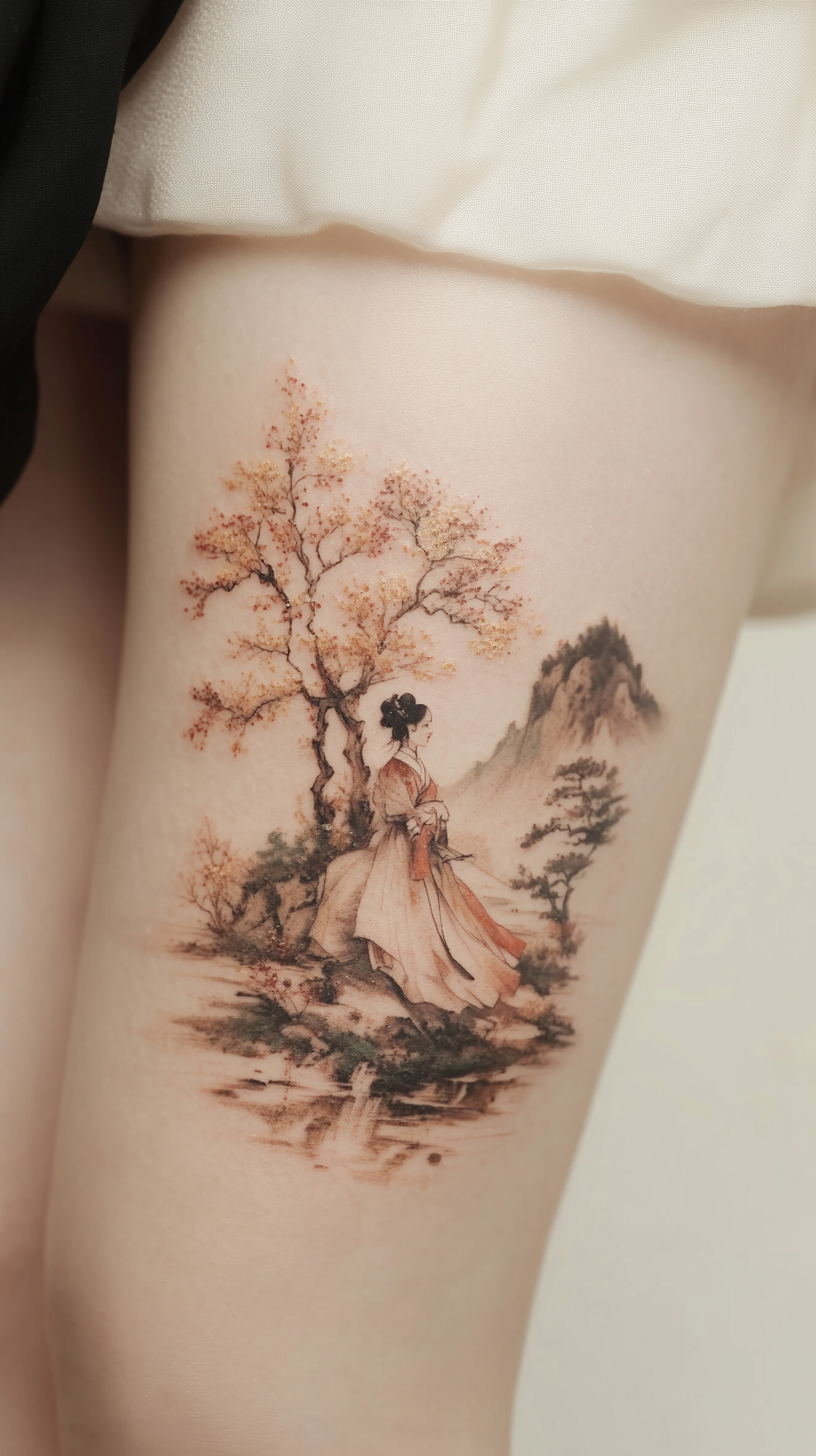
Realistic tattoos showcasing Korean cultural elements offer photographic detail and dimension. You might choose portraits of historical Korean figures, realistic depictions of traditional instruments like the gayageum, or lifelike renderings of Korean landscapes. Artists use advanced shading techniques and precise color matching to create three-dimensional effects that bring Korean cultural elements to life on skin. These tattoos serve as powerful cultural statements while showcasing technical tattoo mastery.
Korean Script With Abstract Elements
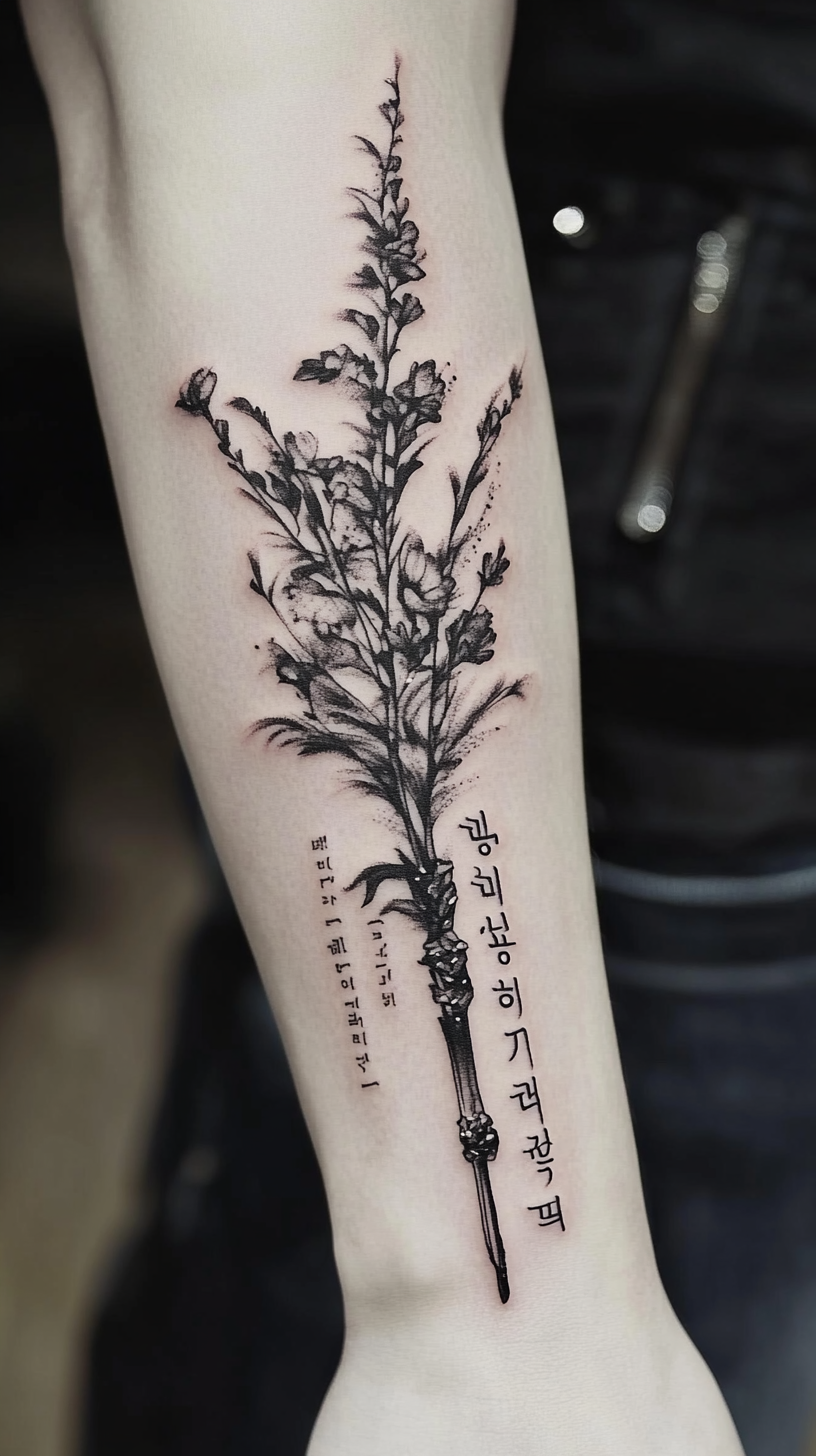
Korean script combined with abstract elements creates balance between structure and artistic freedom. Your design might feature meaningful hangeul phrases surrounded by abstract representations of emotions or concepts related to the text. Artists often use color fields, geometric shapes, or organic forms to complement the precise structure of Korean characters. This combination allows for personal expression while maintaining the integrity of the language elements.
Korean Pop Culture Fusion
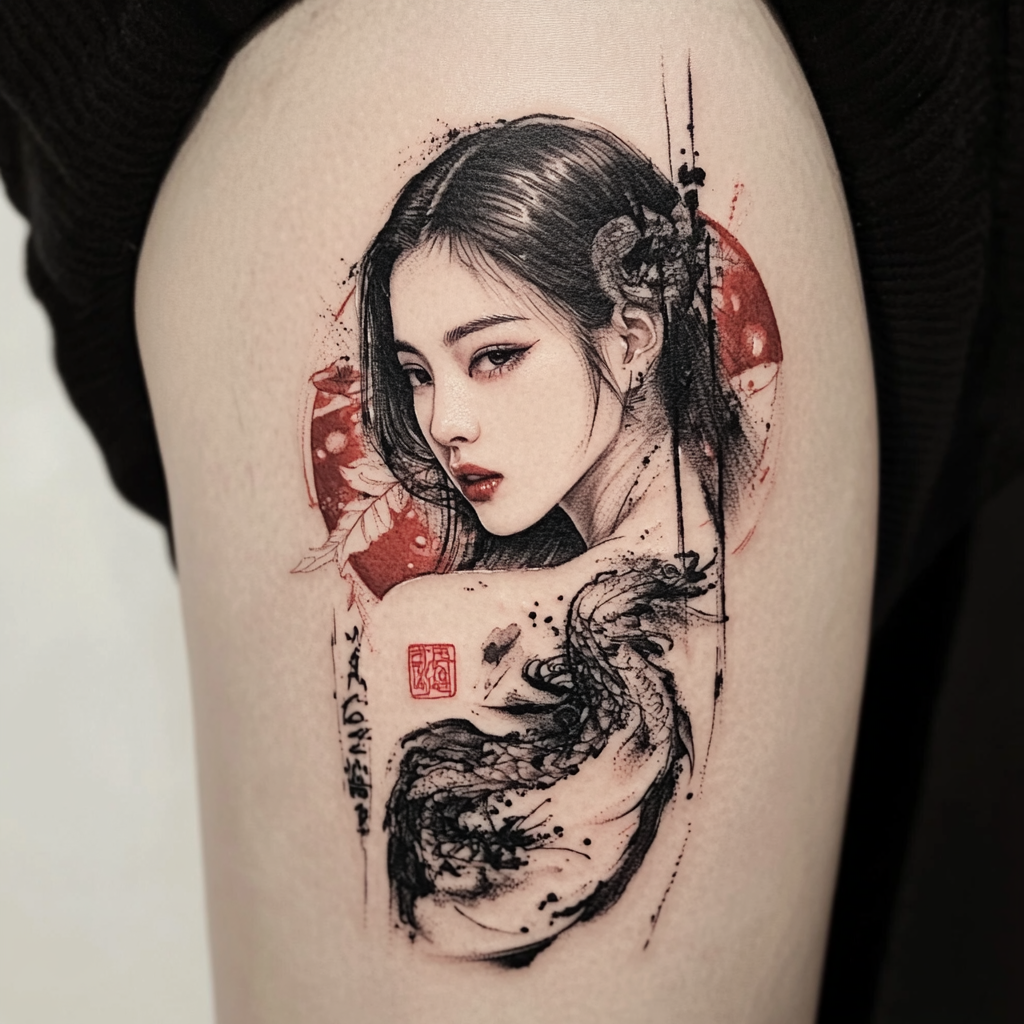
Korean pop culture references fused with traditional tattoo styles create contemporary cultural statements. You might incorporate elements from K-pop, K-dramas, or Korean cinema rendered in American traditional, neo-traditional, or blackwork styles. Artists often combine modern cultural references with traditional tattoo techniques to create pieces that reflect contemporary Korean cultural influence. These designs speak to the global impact of Korean entertainment while creating unique visual interpretations.
Korean-Inspired Ornamental Designs
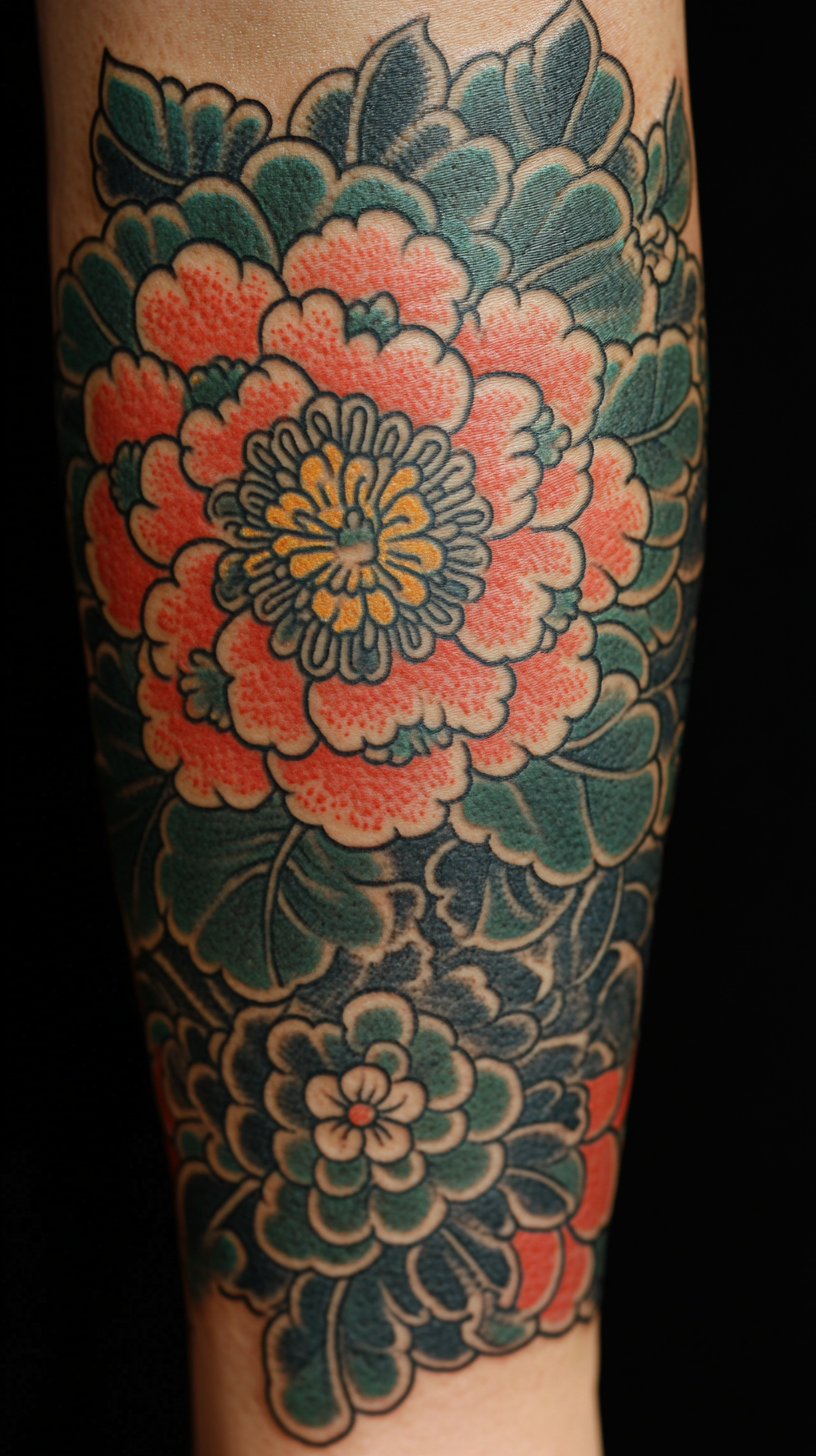
Ornamental tattoo techniques enhance the decorative aspects of Korean cultural elements. Your tattoo might feature traditional Korean patterns like dancheong or interlocking geometric designs rendered with the symmetry and precision characteristic of ornamental tattooing. Artists often use repetitive patterns, mandalas, and intricate details to create highly decorative pieces inspired by Korean architectural and textile traditions. These designs transform Korean visual elements into stunning decorative body art.
Korean Mythology in New School Style

New school tattoo techniques bring playful exaggeration to Korean mythological figures. You’ll find these designs feature creatures like dragons, tigers, or dokkaebi rendered with cartoonish proportions, bold colors, and ever-changing poses characteristic of new school style. Artists typically emphasize exaggerated features and add modern elements while maintaining the core characteristics that make these figures recognizably Korean. These playful interpretations create accessible entry points to Korean mythology.
Korean Celestial Symbols With Cosmic Backgrounds
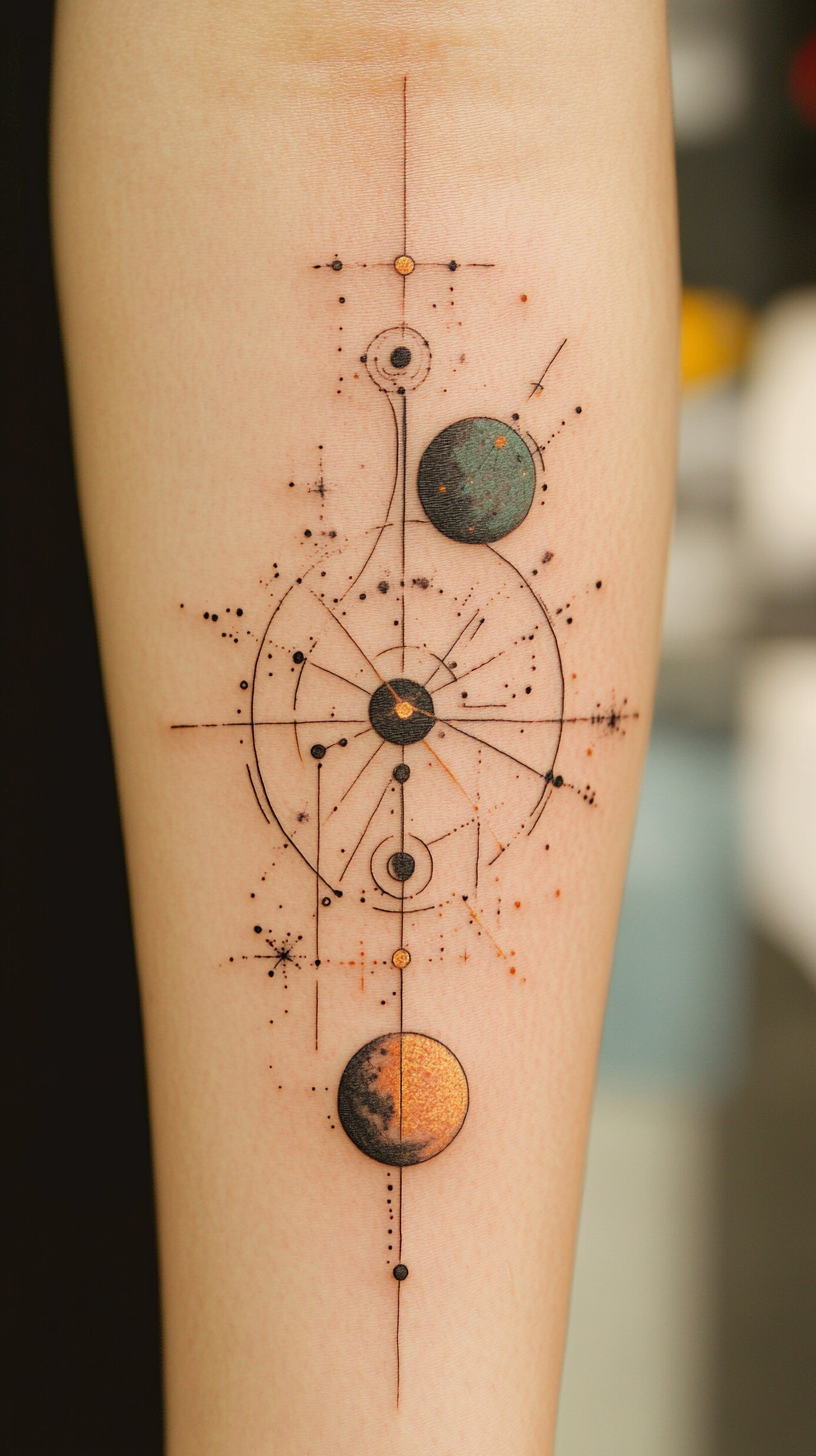
Korean celestial symbols set against cosmic backgrounds connect traditional astronomy with modern space imagery. Your tattoo might incorporate elements from Korean astronomical charts, moon symbolism, or star patterns rendered against galaxies, nebulae, or other cosmic scenery. Artists often use color theory and light effects to create dramatic contrast between ancient symbols and vast space imagery. These designs reflect Korea’s rich astronomical traditions while creating visually stunning contemporary pieces.
Honoring Korean Culture Through Respectful Tattoo Choices
Korean tattoos offer more than just striking aesthetics—they’re gateways to a rich cultural heritage thousands of years in the making. Whether you’re drawn to minimalist hangeul script a bold tiger symbol or watercolor landscapes your tattoo choice connects you to Korea’s artistic legacy.
Remember that the most meaningful Korean tattoos come from understanding the symbols you choose. Take time to research consult with knowledgeable artists and approach these designs with cultural respect. The evolving tattoo scene in Korea reflects both tradition and innovation making it an exciting art form to explore.
As Korean tattoo art continues gaining global recognition your thoughtfully chosen design becomes part of this cultural conversation. By wearing Korean-inspired ink with knowledge and appreciation you’re not just decorating your body—you’re honoring an enduring artistic tradition.
